
This report covers the IMPACTS OF OUR BUSINESS between 2023 and 2024, explores OUR GOALS and TARGETS and sets out our ROADMAP FOR CHANGE .


This report covers the IMPACTS OF OUR BUSINESS between 2023 and 2024, explores OUR GOALS and TARGETS and sets out our ROADMAP FOR CHANGE .
THOUGHTFULLY MADE FURNITURE from our SOMERSET FACTORY .

For over two decades, we have been manufacturing thoughtfully designed furniture that brings together British craftsmanship, sustainable innovation, and workplace functionality. We collaborate with leading international designers to create pieces for our collection that are united by their superb quality, integrity of design, and sustainable intent.
Taking a life cycle thinking approach to product development, we apply material intelligence and design understanding to all the pieces in our collection, helping us develop low impact furniture for a better future.
Our factory is home to a skilled team of local craftspeople who produce our collection with care and precision, taking great pride in their work. Combining world class international design with local expertise, we create carefully considered, responsibly made furniture, tailored to the evolving needs of the modern workplace.

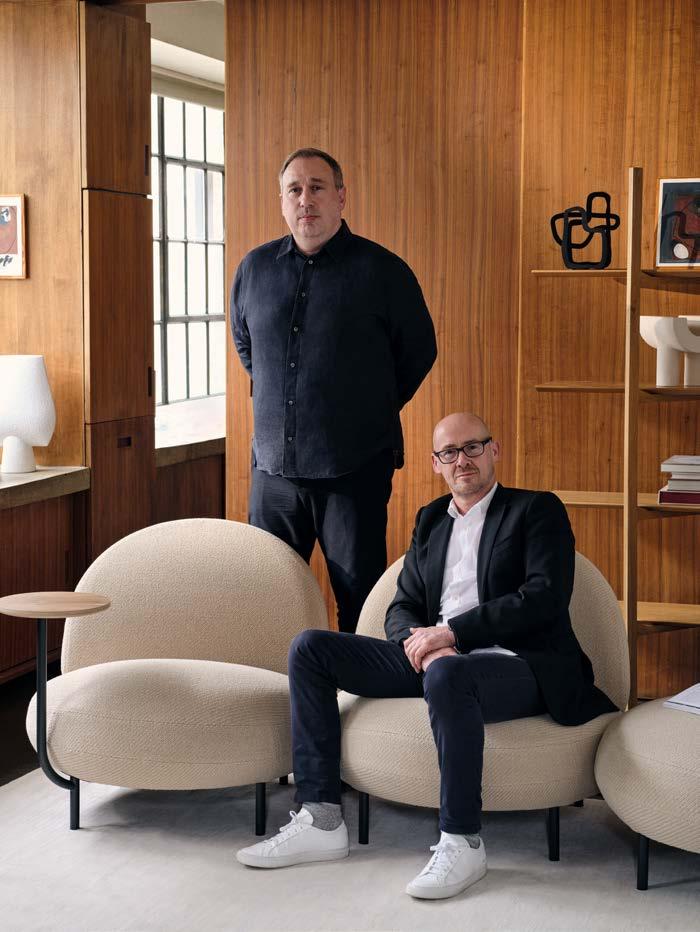
JON POWELL & ED RICHARDSON Co-founders
2024 was a great year for Modus as we joined forces with global furniture manufacturer, Teknion. To reduce transport distances, we began localising manufacture of key Teknion products for the European market here in Somerset and localising production of our collection in North America and Asia.
We continued to develop our portfolio, focusing on a strong design for disassembly intent with our Maluma seating system and expanding the Balance chair family. The design excellence of our foam free seating system, Edge Free, was recognised with a Design Guild Mark and we began work on extensions to existing ranges and collaborating on exciting projects with new designers.
After a couple of years preparing, in 2023 we finally became a certified B Corp. Becoming a B Corp was a natural transition for us and helps support the strategy we already have in place. The recently updated B Corp standards have seriously raised the bar and we are working hard across the business to keep pushing ahead with our B Corp journey so we can use our business as a force for good.
Looking ahead to 2025 and beyond, we have some great products in the pipeline and as we move into the quarter century mark, we are taking time to reflect on our progress so far and our priorities for the years ahead.
To all our suppliers, customers and collaborators, thank you for being part of this journey as we continue to make thoughtfully made British furniture.
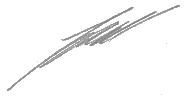
Jon Powell Managing Director
After almost two years of working towards it, we finally achieved B Corp certification.
Our foam free seating system, Edge Free won a prestigious Design Guild Mark.
We launched Maluma, a modular seating system designed for disassembly.
We partnered with global furniture manufacturer, Teknion.
100% of our collection containing wood based products can now be sold with FSC certification.



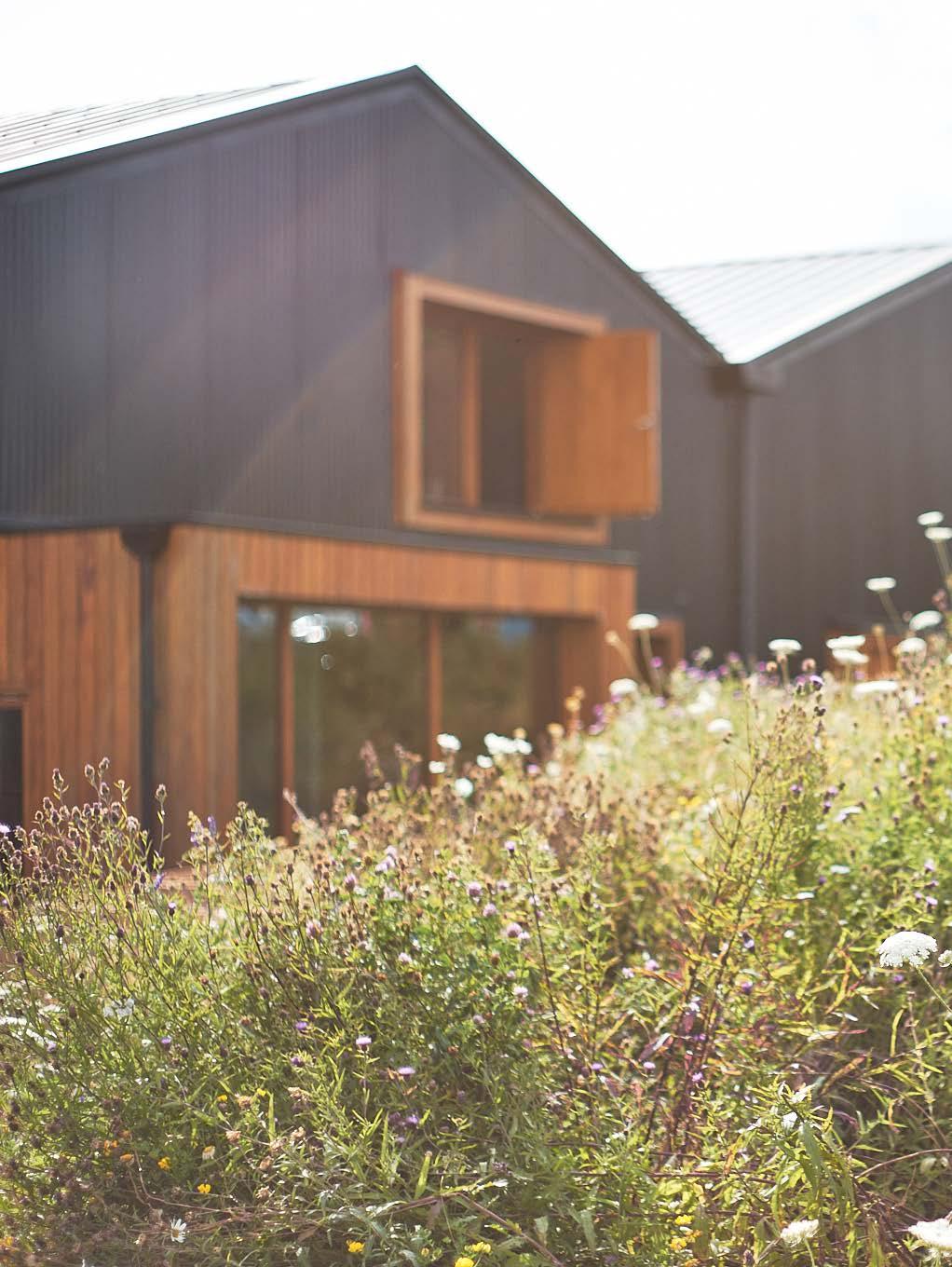

Transferred to 100% renewable electricity supplier
Became a Carbon Neutral Plus Organisation
Moved to purpose built premises and planted our wildflower bank
Joined the Furniture Industry Sustainability Programme
Set up our scrap donation scheme to local schools
Switched to waterbased lacquers
Created our policy on plastics
Launched our first 100% recycled cork product
Developed our first chair with replaceable cover
Became an Accredited Living Wage Employer
Attained FSC™ Chain of Custody
Became a certified B Corporation
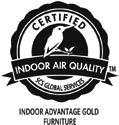
2
Launched our first chair made from 100 recycled bottles
Calculated recycled and recyclable content of our ranges
Started measuring embodied carbon in our collection
Achieved Indoor Advantage™ Gold certification for the entire collection
Created ReWork — our furniture take back scheme
Extended our warranty to 10 years
Launched Edge Free — our first foam free seating system
Developed Maluma — our first seating system designed for disassembly
Published our first life cycle assessments
Installed solar panels on our factory roof
Installed EV charging for staff and visitors and for a future EV fleet.
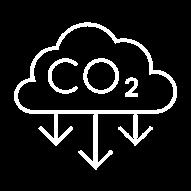
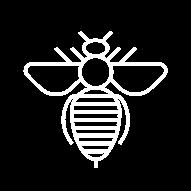



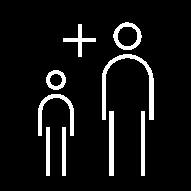
At the rate we are consuming resources we need 1.5 PLANET EARTHS - we really need to start talking about 'OVERSHOOT'.
Once upon a time, furniture was highly valuable, skilfully crafted and built to last, passed down from one generation to the next. Skip forward to the C21st and fast furniture has become the norm. The success of IKEA in the domestic sphere and its ‘pile it high - sell it cheap’ methodology has only added to our expectations of short-lived, fashion focused furniture. In the world of contract furniture, the expected lifespan of a piece of furniture is often less than its warranty period, with re-fit cycles occurring at an alarming rate and furniture being discarded after just 5 years. In the EU alone, furniture waste amounts to over 10.78 million tonnes a year*. As fit-out cycles become shorter and shorter, we need to give furniture production and consumption a serious rethink.
Bio-capacity is the term used to describe the capacity for an ecosystem to regenerate its useful biomass and to absorb waste materials generated by humans. If human behaviour in one geographical region outstrips the bio-capacity of that region then there is a bio-capacity deficit. Where there is a regional or national bio-capacity deficit this is managed by importing bio-capacity from another region. Over half the world’s bio-capacity is found within just 10 countries. The problem is that we have a global bio-capacity deficit, a shortfall of the Earth’s ability to regenerate at the same rate we are consuming resources and producing waste. In fact, we need 1.5 planets to carry on the way we are. This is called ‘overshoot’.
We are feeling, first-hand, the effects of overconsumption. Climate breakdown is just one symptom of ‘overshoot’. Atmospheric carbon dioxide continues to climb, our forests are disappearing, our oceans are becoming increasingly acidic and by 2050 will contain more plastic than fish**, our land is degraded, our soil depleted, and we have seen a 73% decrease in abundance of wild species in just thirty years.*** We need a radical transformation of food systems, energy systems and a significant downturn in our consumption of resources and an upturn in conservation of the natural world. It is time we started talking about the impacts of overshoot and started living within our means.
For furniture, this means we need to use resources as judiciously as we can, make furniture that lasts and offer spares and replacement parts, design it for re-use, repair and refurbishment and shift to a circular economy that functions within ecosystem limits and supports the needs of all society. Our product development continues to focus on making intelligent material choices and constructing products in a way that facilitates re-use.
Lucy Crane Head of Sustainability
This assessment covers the financial year 1st of April 2023 to 31st of March 2024.
* CORDIS – European Commission
** Ellen MacArthur Foundation
*** 73% decline in wild species monitored by the Living Planet Index between 1970 and 2020
78.47 T CO2e
104 T
727.66 M3
WASTE TIMBER PLASTIC WATER
1.07 T 338 M3
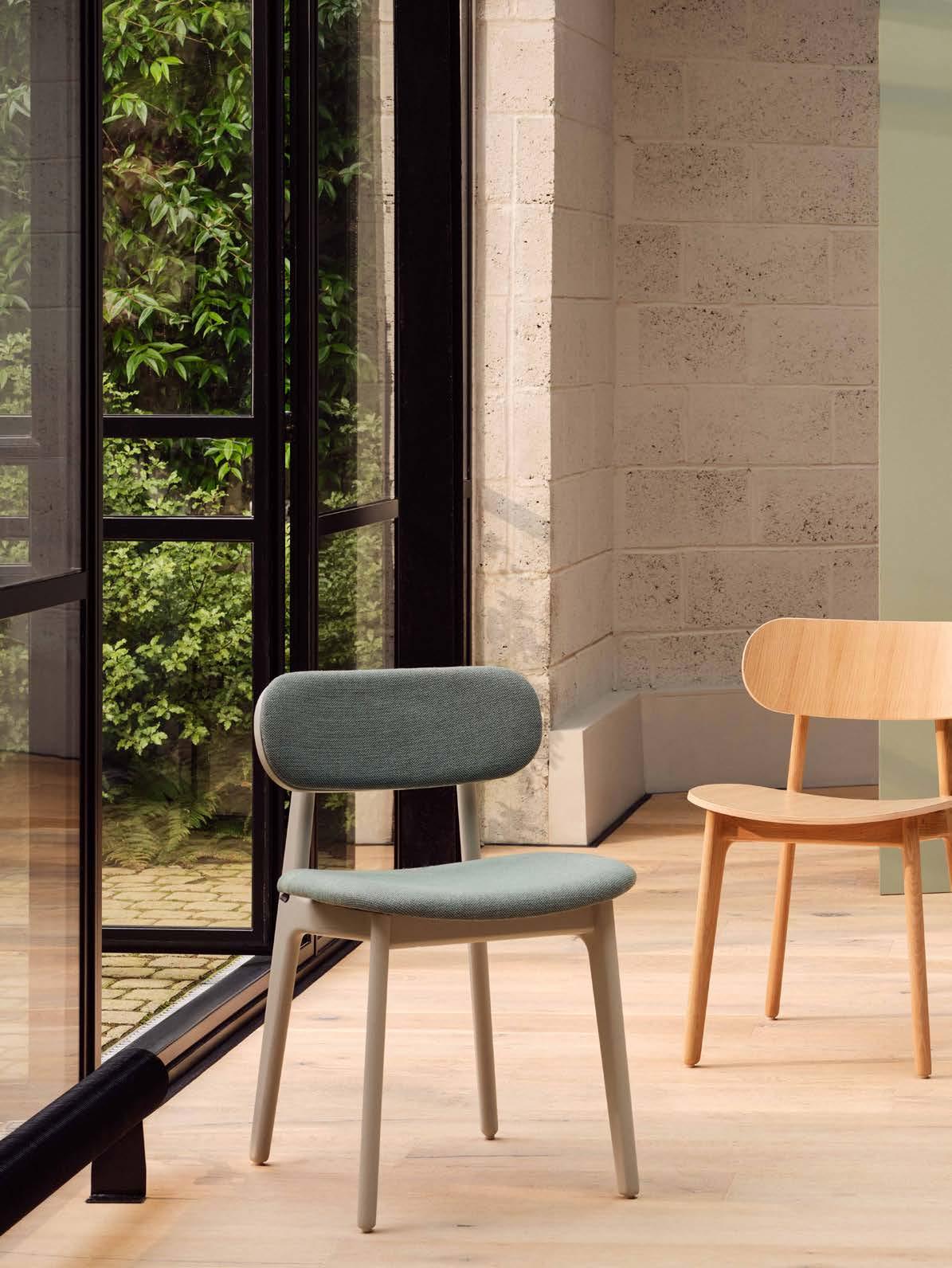


As ATMOSPHERIC CARBON continue to climb, one thing has - we are all going to have to change
Our carbon emissions for 2023–2024 were 78.46 T CO2e, SLIGHTLY UP on 2022-2023 (75.26 T CO2e). This was due to several factors but the most significant contributor was business travel.

This came in the form of trains, planes and automobiles but by far the most significant was an upturn in our regional sales which has seen our team spending more time on the road. This shift means we need to look at increasing our number of electric vehicles.
We were 4% up on last year's emissions but still 49% down on our baseline year but, and it's a big but, we know the vast majority of our emissions are scope 3 emissions and sit within our supply chain. As we continue to map our scope 3 emissions we are starting to build a picture and formulate a plan to decarbonise our supply chain.
COMPARED TO BASELINE YEAR
COMPARED TO PREVIOUS YEAR
*2020 – 2021 saw us move our financial reporting from 1st Nov to 1st April which is why 2021-2022 is not shown but has been included in our assessment.
SCOPE 01
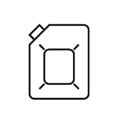
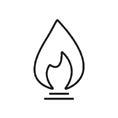
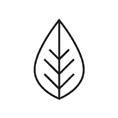
SCOPE 02

SCOPE 03


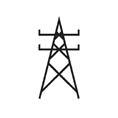


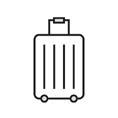



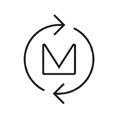
SCOPE 1, 2 AND 3 might seem a bit confusing at first but once you break them down it is pretty straightforward.

Currently Reporting Recording in 2024-25
Scope 1 are associated with the greenhouse gas emissions your company emits directly into the atmosphere. Emissions from petrol, diesel, gas and bio fuel all fall under scope 1.
Scope 2 covers the emissions associated with the electricity you buy on site.
Scope 3 emissions include the emissions associated with your business activities both up and downstream. Business travel, distribution, operational waste and so on.
Scope 3 typically represents at least 90% of a company's carbon emissions so it is in scope 3 that we need to concentrate our efforts.
We have been reporting on our scope 1 and 2 emissions categories from scope 3, while we continue to map out a full scope 3 inventory. This exercise has been complex and time consuming but we are almost there and plan to disclose a full scope 3 assessment in our next impact report for 2024-2025.

While we continue to map our scope 3 emissions, understanding where our scope 1 and 2 emissions are heaviest helps inform our carbon reduction strategy. We continue to be powered by renewable energy, 39% of which is generated by solar panels on our factory roof, company cars are electric but we have also used one petrol based car this year which accounts for a higher business travel footprint. This is something we aim to resolve as well as swapping a diesel powered van for an electric one.
*2019–20 figures reflect the impact of the COVID pandemic on international travel. Figures show scope 1 and 2 emissions and all travel related scope 3 emissions.
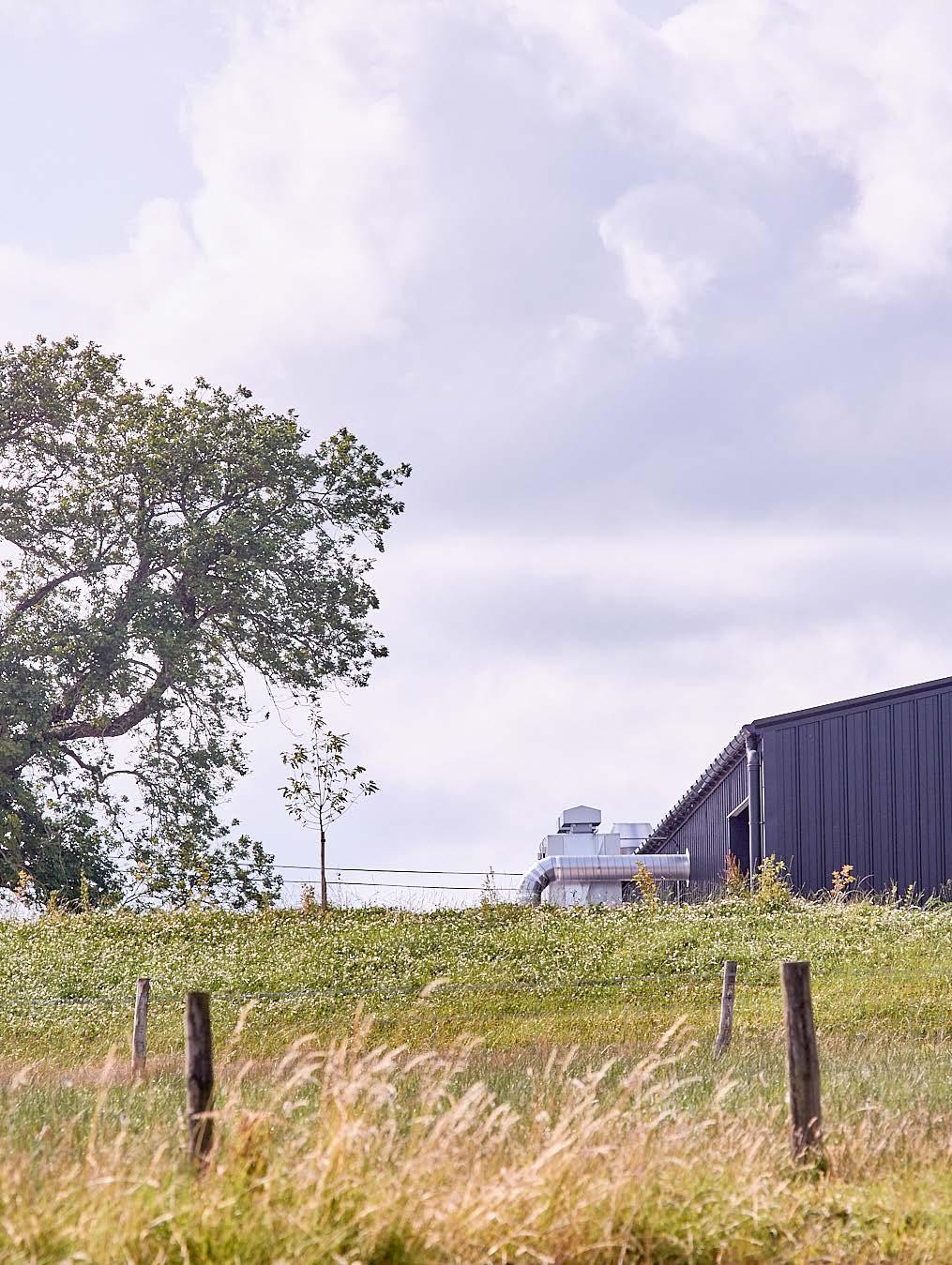
Manageable, measurable and completely WITHIN OUR CONTROL , scope 1 GHG emissions are our DIRECT TO AIR EMISSIONS , from the gas that heats our showroom, the bio pellets that heat our factory and offices and the diesel that powers our fleet.

29.85 T CO2e
Our scope 1 emissions come from the gas that heats our showroom, the bio pellets that heat our factory and offices and the diesel and petrol that powers our fleet. Running a heat efficient factory and making deliveries as fuel efficient as possible is the best way to keep these direct to air emissions down. As electric vehicles suitable for deliveries become available we will transition to an electric fleet. In the meantime we are exploring a shorter range van for local deliveries.
As global demand for ENERGY continues to grow, we are making some of our own right here at MODUS HQ.

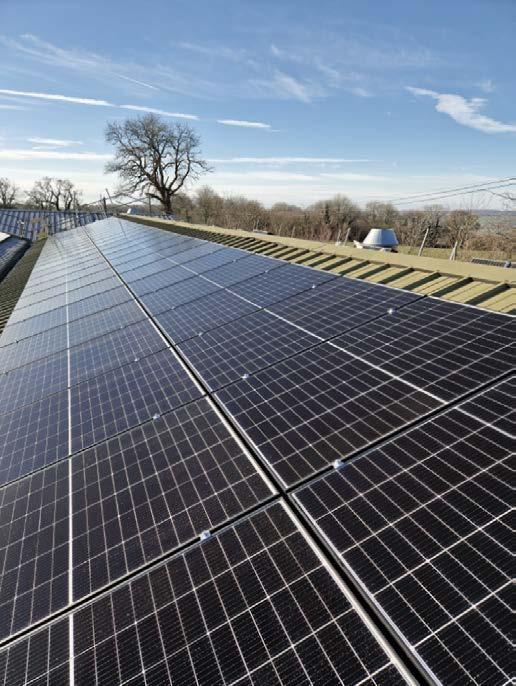
39%
We always choose clean energy to make our furniture, 39% of which comes from solar panels on the factory roof in our HQ in Somerset.
We slashed our scope 2 emissions in 2022 when we installed photovoltaic panels on our factory roof. We continue to generate 39% of our electricity needs and we are exploring ways to increase our energy independence.
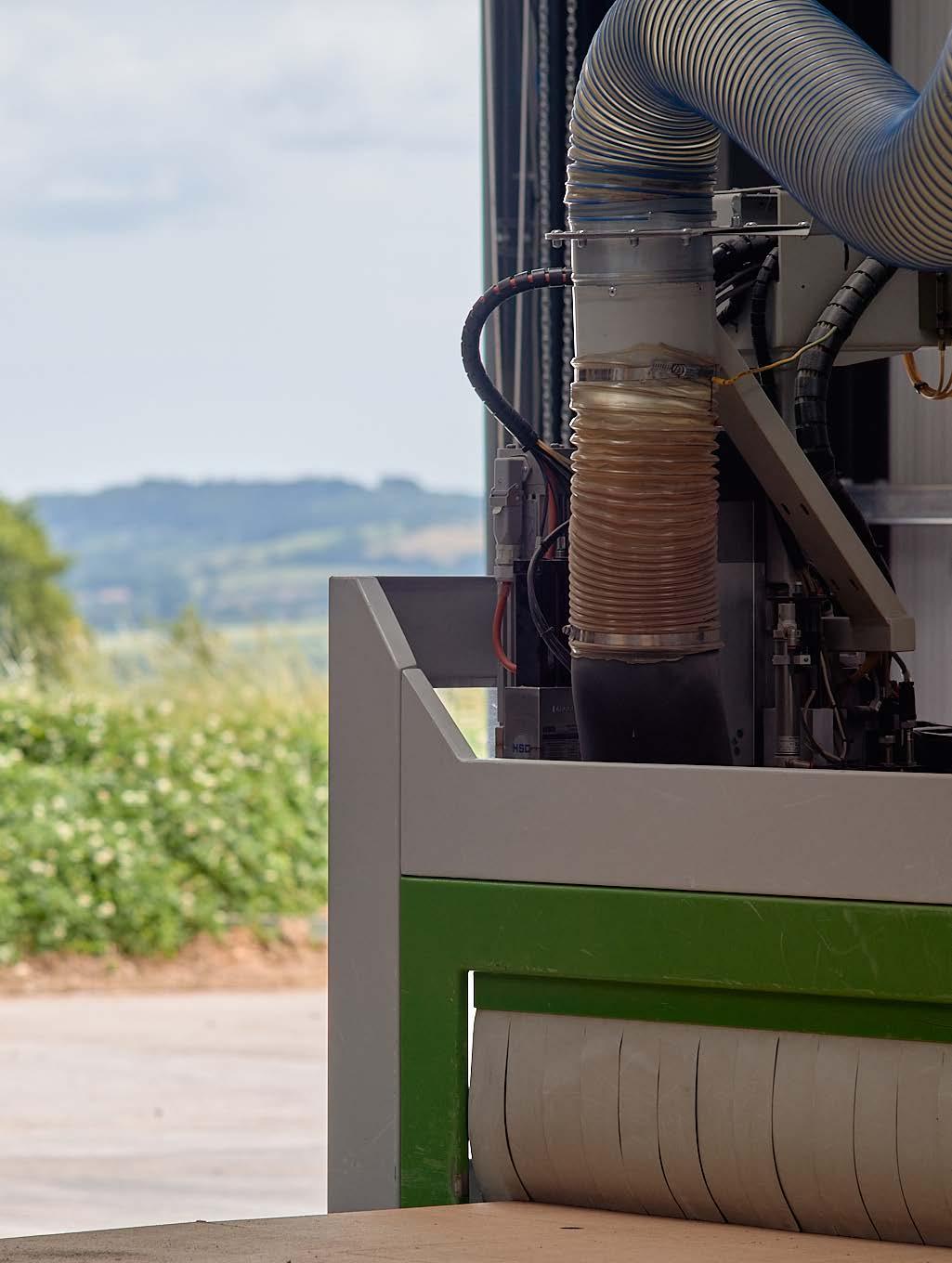
Much more complicated than scope 1 or 2, scope 3 emissions are largely created by the activities of OUR SUPPLY CHAIN .
Emissions categories are set by the
3.3 Fuel and energy related activities not covered by scopes 1 & 2 - you will see these called ‘well to tank’ or ‘transmission and distribution’. These are emissions associated with the extraction, production and transportation of the fuels that we use but occurring off-site, for example extraction of gas or the refining of crude oil into diesel.
3.5 The treatment of waste-water in operational waste.
3.6 Business travel – we need to expand this to include hotel stays.
For 2024-25 we will be we will also be measuring emissions associated with:
3.7 Employee commuting - from bikes to buses, we need to know how everyone is getting to work every day.
3.9 Upstream transportation and distributionthis category includes third-party distribution that we use to deliver our furniture and, more difficult to report on - emissions associated with the transport of materials to our factory.
3.1 Purchased goods and services - including all supply chain spending, this is where the bulk of our emissions sits, we estimate this will account for over 90% of our emissions and this is where we really need to focus.
3.2 Capital goods - including all machinery and computing related soft and hardware.
3.5 Operational waste - although we know our annual total of recycled and non recycled waste, we are working with our waste management partner to gain greater visibility on a more detailed breakdown by material type so that we can calculate the carbon.
3.4 Downstream transportation - the emissions that come about as a result of our customers who collect goods from us.
3.12 End of life treatment of sold goods looks at the emissions associated with the recycling and disposal of our products when they can no longer be used.
Emissions categories 3.8, 3.10, 3.11, 3.13, 3.14 and 3.15 are not in scope for our organisation.



As we start to feel the impacts of CLIMATE , it's easy to obsess are a whole host of PLANETARY we are crossing that need our attention.
of
about carbon - but there
It’s not just RISING CARBON DIOXIDE levels and ensuing climate change that threaten our existence, there are 8 other planetary boundaries that we need to respect to maintain a LIVEABLE PLANET.
Biodiversity loss, ocean acidification, chemical pollution, nitrogen and phosphorous loading, land use change, freshwater use and air pollution are all boundaries we are pushing to and beyond their limits. The only planetary boundary for which we are moving in the right direction is the only one for which internationally agreed limits exist. In fact, ozone depletion has reversed since the signing of the Montreal Protocol – which goes to show the power of policy to change the world.
As a manufacturer, we need to understand what we can do to prevent and mitigate transgressions across planetary boundaries. The first step is to identify which materials and processes put more pressure on Earth system boundaries by carrying out a life cycle assessment or LCA. A Life Cycle Assessment, or LCA, doesn't just give a carbon footprint, it assesses a product against its potential to affect a whole range of environmental issues – from freshwater eutrophication to photochemical smog creation – and reports these results according to standardised units of measure.
Unless you know what you are looking for when reading an LCA, it can all be a bit daunting. The table opposite explains what each environmental impact indicator means, the units it’s measured in and the materials and activities that tend to be high in impact.
Environmental Impact Unit Description
Global Warming Potential (GWP) Total kg CO2e The global warming potential of a greenhouse gas (GHG) is measured by its ability to trap heat within the Earth's atmosphere. All GHGs have been standardised to be equivalent to 1kg of CO2. GWP total is the sum of the three impact indicators below.
Global Warming Potential (GWP) Fossil Fuels kg CO2e
Global Warming Potential (GWP) Biogenic kg CO2e
Global Warming Potential (GWP) Land Use And Land Use Change (LULUC)
Global warming potential associated with the burning of fossil fuels.
Biogenic carbon sequestered from the atmosphere via photosynthesis in biomass growth. In an LCA, biogenic carbon is often reported as a negative value at the product stage but shown as a positive at end of life stage as it gets released back into the atmosphere via incineration or decomposition in landfill.
kg CO2e The potential for global heating as a result of land use and land use change. LULUC leads to habitat and biodiversity loss and can lead to soil degradation.
Ozone Depletion Potential (ODP) kg CFC-11e In the same way that GHGs are standardised against 1kg of carbon, ozone depleting substances are standardised against chlorofluorocarbon-11. We need ozone in the stratosphere to protect life on Earth against the harmful effects of UV radiation. Thanks to the Montreal Protocol, which restricted the use of ozone depleting substances, ozone in the stratosphere has begun to repair.
mol H+e
Acidification Potential (AP)
Eutrophication Potential Terrestrial mol Ne
Eutrophication Potential Marine
kg Ne
Sometimes shown as a sulphur dioxide equivalent (SO2), acidification potential is the ability of a substance to build and release hydrogen ions reducing the pH of water.
Eutrophication is the process where excess nutrients build up in one site, either aquatic or terrestrial. On land, excess nitrogen leads to individual species dominance, disrupting ecosystem balance.
Marine eutrophication is caused when freshwater systems overloaded with nitrogen or phosphorous reach the coast or nutrients are released directly into the sea. Aquatic eutrophication leads to algal blooms and dead zones where there is little or no oxygen in the water.
Eutrophication Potential Freshwater kg Pe Freshwater eutrophication happens when systems are overloaded with nutrients, disrupting freshwater ecosystems.
Photochemical Ozone Creation Potential (POCP)
Abiotic Depletion Potential
NMVOCe
kg Sbe
Photochemical smog is created when sunlight reacts with nitrogen oxides (NOx) and hydrocarbons to form tropospheric ozone.
ADP relates to resource depletion. Abiotic depletion describes the global reduction of nonrenewable resources. The potential for abiotic depletion is determined for extraction of minerals based on their known remaining reserves and rate of extraction. Measured against the relative scarcity of antimony (Sb).
High Impact Materials & Activities
Materials derived from fossil fuels, materials that demand a lot of energy to extract, refine and process.
The production of any material that has high demand for fossil fuels - steel, cement, plastics.
Timber based and renewable products - cardboard and paper, hemp, linen, cotton.
Any material that requires large amounts of land, especially land that has been deforested - wool, leather, paper, mined materials and agriculture.
Refrigerants of all kinds - air conditioning units, refrigerators.
Any activity that produces high levels of air pollutants - agriculture (ammonia) and burning of fossil fuels (nitrogen oxides and sulphur dioxide).
Activities that overload ecosystems with phosphorous or nitrogen - agricultural run off, poor sewage management.
Discharge of sewage directly into the sea, phosphorous used in industry.
Wastewater can be high in nutrients - textiles manufacture, household detergent use.
VOC emissions and NOx from industrial activity and emissions associated with transport are the biggest contributors to POCP.
Minerals and metals such as cobalt, copper, gold. Abiotic resources will all run out at some point so the best way to use these resources is to focus on the highest level of recycled content.
Abiotic Depletion Potential Fossil Resources
MJ
Abiotic depletion potential for fossil fuels refers to the global reduction of fossil fuels. Like abiotic depletion potential, this is s determined by rate of fossil fuels and remaining reserve. Mainly used as source of energy, crude oil is also used to produce every type of plastic.
Fossil fuels - crude oil, gas and coal and materials derived from fossil fuels - plastics.
Water Use
m3
Use of freshwater and the likelihood of contributing to water deprivation. The United Nation predicts that by 2030 half the world's population will be living in areas of high water stress and between 24 and 700 million people could be displaced due to water scarcity.
The following sectors have the highest demand for freshwater - agriculture, fashion, energy, meat production, beverages industry, construction, mining and automotive industries. The production of cardboard also has high water demand.
By creating life cycle assessments for our products, we can gain valuable information about where impacts build up within types of products and within individual designs.
Materials matter – biobased materials like wood, hemp and cork have low, but not no, impacts, the biogenic carbon they contain will come out eventually making a cradle to grave assessment key. Recycled materials have lower impact than virgin materials but recycling is still pretty impactful, so it needs to be a last resort.
Embodied carbon does not exist outside time – it needs to be understood in terms of value for carbon over time – a low quality, low carbon product that needs to be replaced every few years is not a better option. Look for longevity and repairability to stretch carbon investments out over the longest possible time period.
Our models are only as good as the datasets we use – carbon foot printing is still in its infancy and as the datasets for materials become more and more accurate, our modelling becomes more nuanced and individualised.
Counting carbon for the sake of counting is not the point – while we are all starting to declare the impacts of our products, the point to all this
data crunching is to learn where we can reduce impacts and that means we need LCA Action Plans. These are documents that identify high impact areas and pinpoint changes that needs to be made.
Not all EPDs are equal, though some EPDs are more equal than others – when comparing EPDs, it is vital to check that the declared or functional units are comparable. 1m2 of desk is not the same as a complete four person desk configuration, and a sofa warrantied for five years is not the same as one that will last for ten. The world of EPDs is a complicated business but until we have transparent information of a product’s environmental impacts, an EPD, or indeed, an LCA, is a good place to start.
CORE ENVIRONMENTAL IMPACT INDICATORS - EN 15804+A2, PEF
GWP — Total (kg CO2e)
GWP — Fossil (kg CO2e)
GWP — Biogenic (kg CO2e)
GWP — LULUC (kg CO2e)
Ozone Depletion Potential (kg CFC-11e)
EP — Freshwater (kg Pe)
EP — Marine (kg Ne) 7,18E-01
EP — Terrestrial (mol Ne )
(kg NMVOCe)
— Minerals & Metals (kg Sbe)
— Fossil Resources (MJ)
Notes on abbreviations: GWP = global warming potential, LULUC = land use and land change, EP = eutrophication potential, POCP = photochemical ozone creation potential, ADP = abiotic depletion potential.

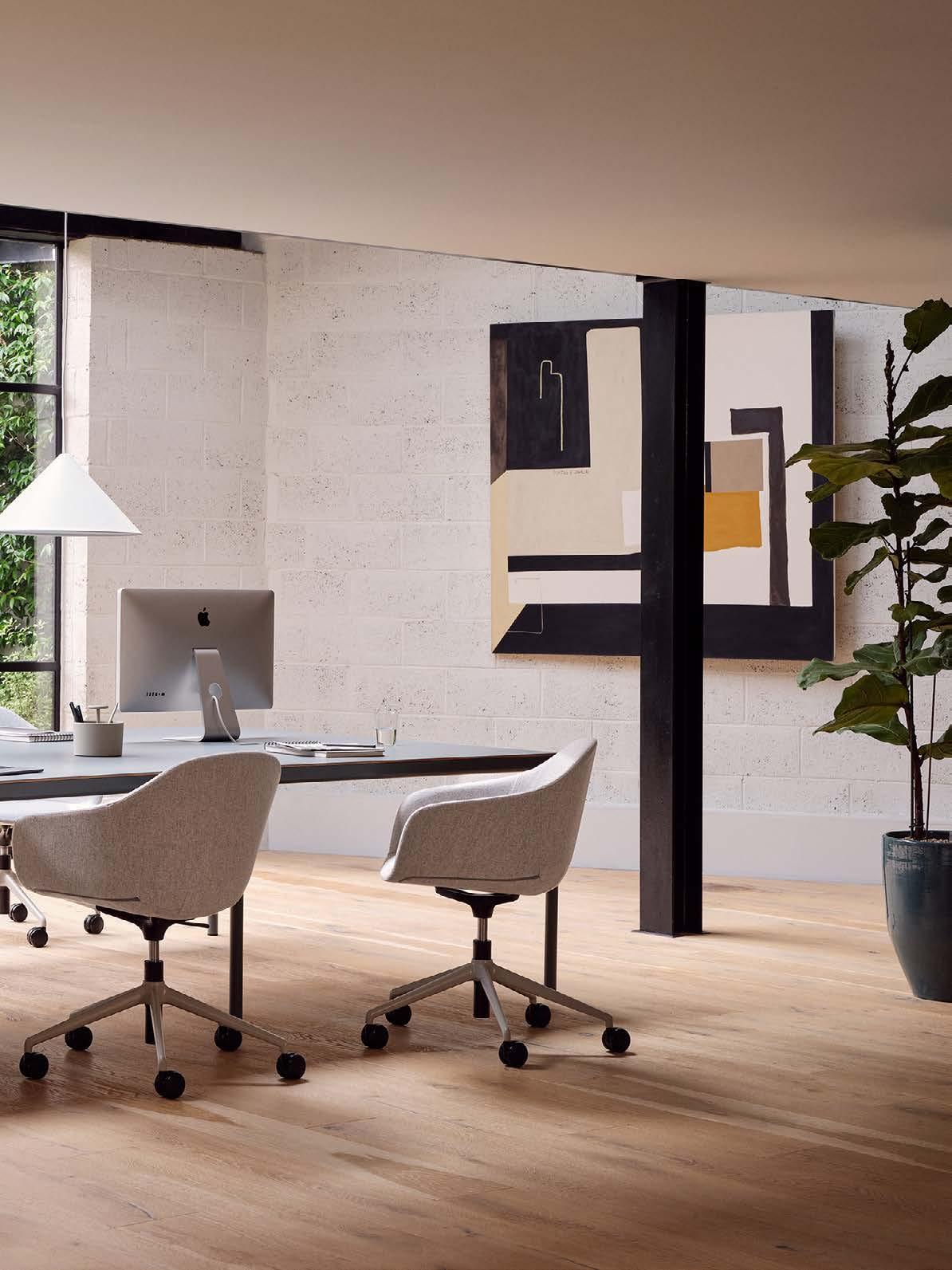

PROTECT
BIODIVERSITY
BY 73% between 1970 and 2020.

Of our collection containing timber parts can now be sold with FSC certification.
Furniture manufacture often uses a huge amount of wood, both solid wood and timber based products like plywood. Our collection is mostly constructed using timber components, from our spruce ply sofa and chair frames to our table tops. In 2023-2024 we used 727.66 m3 of timber, which makes using sustainably sourced timber all the more important.
Since redesigning the Belt stool everything in our collection can now be sold with FSC certification.
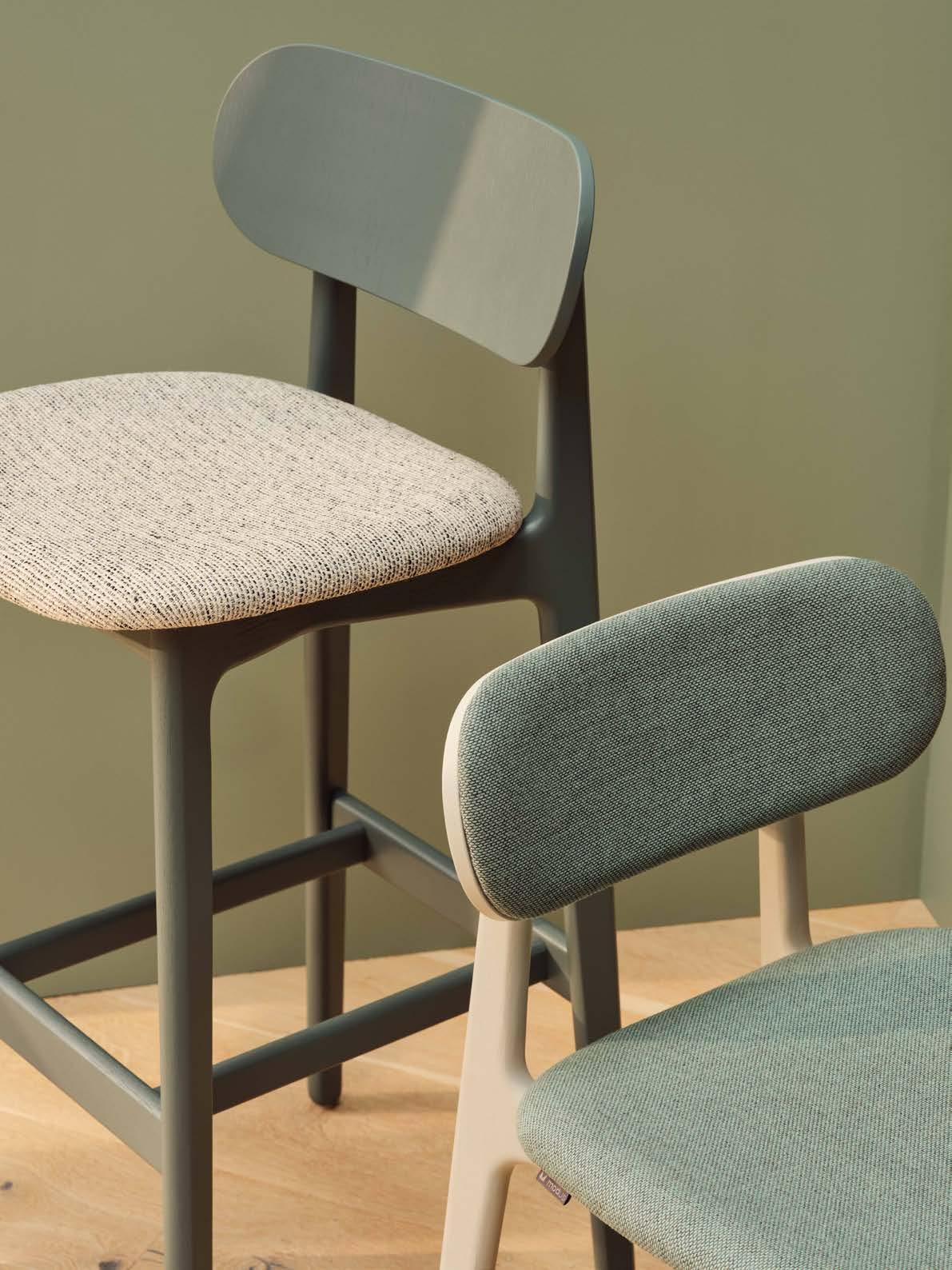
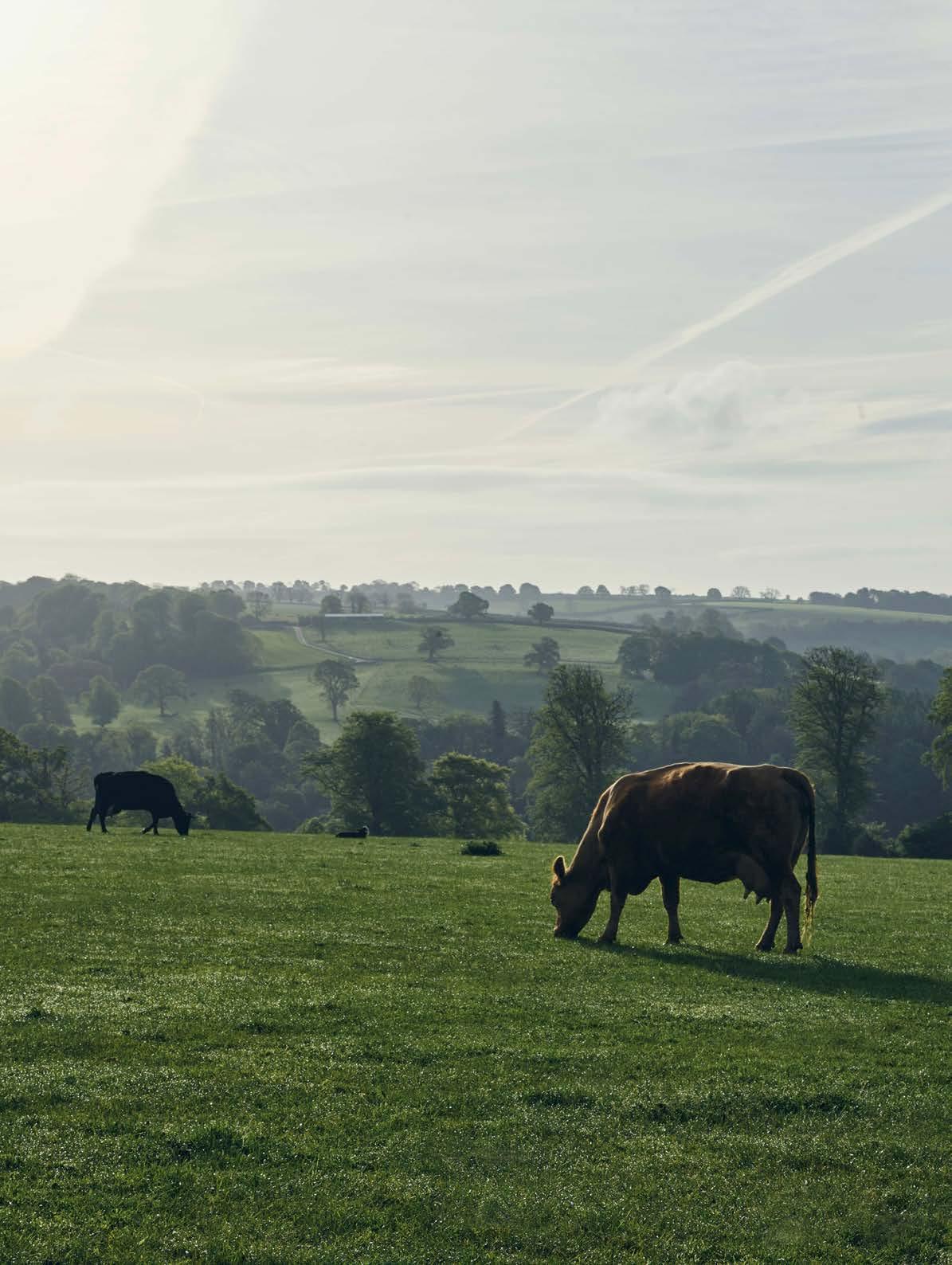
Anyone who has visited us at MODUS HQ will know we are incredibly lucky to have a fantastic site which makes it easy to support the BIODIVERSITY right on our doorstep.

We are now in our third year of compost making. The apple cores and coffee grinds of yesterday become the compost of tomorrow, helping improve soil structure and break up the heavy clay at HQ.
We have a wildflower bank hand scythed each autumn and planted with nectar rich, native flowers to support local pollinators - cornflower, cowslip, foxglove, meadow cranesbill, red clover, common knapweed, red campion, ox eye daisy, toadflax and musk mallow.
We leave plenty of space for Nature to do her thing and provide safe places to feed, nest and shelter as well as donating timber offcuts to local charities to make hedgehog shelters and nest boxes.

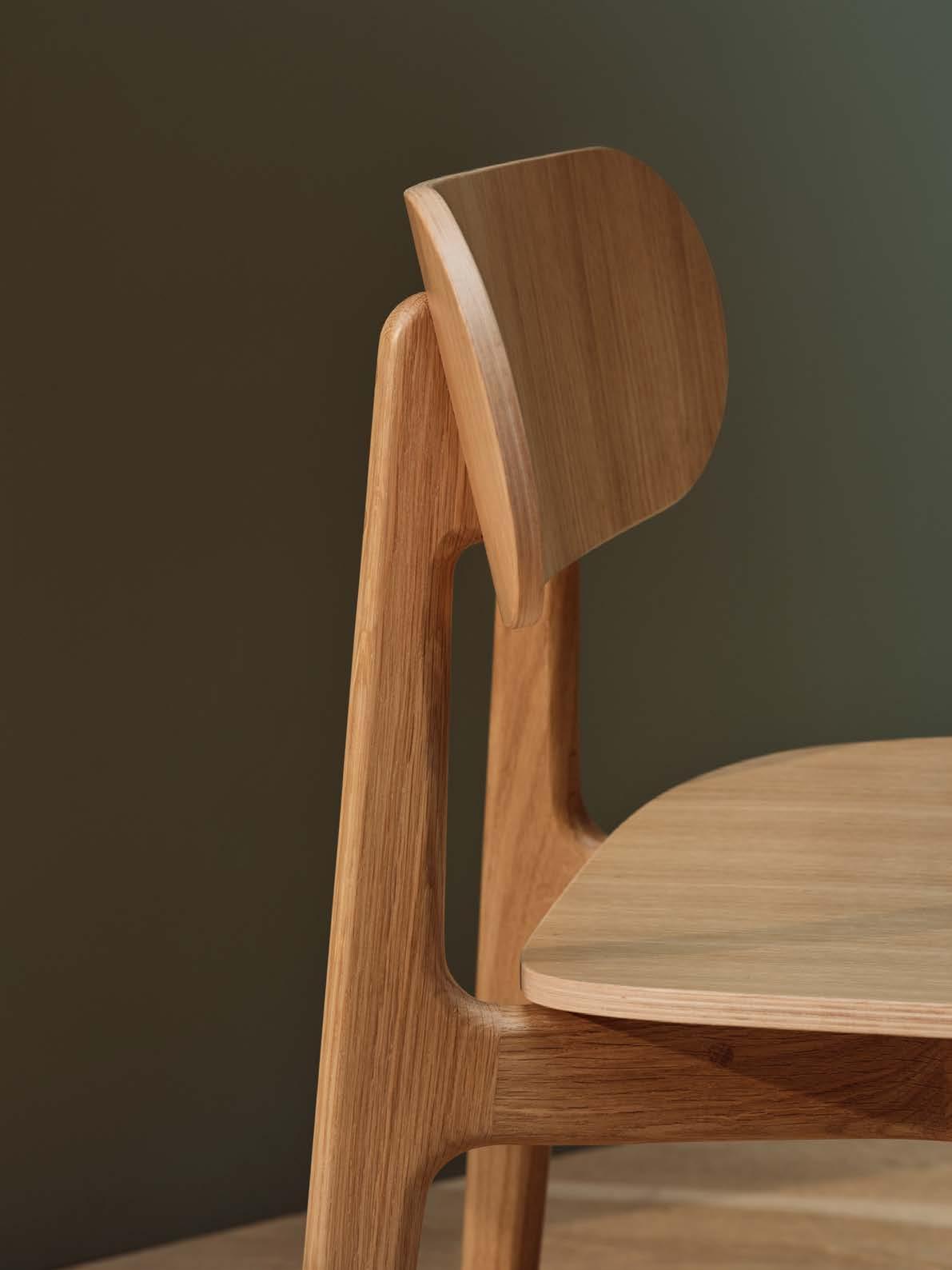
The spaces we occupy can only be as HEALTHY as the products we fill them with, but its not just about the end user, the INGREDIENTS that go into our products impact the team who makes our furniture, as well as workers furthest up the VALUE CHAIN , who often have the least protection and highest levels of exposure.
As the world continues to grow in its understanding of how manufactured chemicals can behave in our bodies and build up in our ecosystems, we continue to build on our understanding of any potentially harmful substances in our supply chain or our manufacturing processes.
Known as ‘forever chemicals’, per and polyfluorinated alkyl substances are a group of thousands of chemical compounds used in finishes and coatings for their stain repellent and waterproofing properties. Found in nature (especially drinking water) and human blood, only 2 out of over 10,000 PFAS are currently restricted under UK REACH. Our standard range of fabrics do not contain PFAS and we use powder coats that are PFAS free. We are working through our collection to ensure that we are not choosing any materials that contain PFAS, this is going to take some time.
Volatile organic compounds can be harmless and naturally occurring (think freshly sawn branches) or very damaging to the people that are exposed to them (think solvents). VOCs also react with nitrogen oxides from industrial and transport emissions, in the presence of sunlight to form photochemical smog. To ensure that our products have low VOC emissions, we use water-based paints and lacquers, and we test our products to compliance with strict emissions limits, our entire collection has been certified to Indoor Advantage™ Gold.
The UK has some of the world's strictest standards when it comes to fire safety, leading to chemical flame retardants being added to almost all upholstered furniture. Our Edge Free seating system uses the naturally flame retardant properties of pure wool to meet UK regulations without the need for chemical additives.
Risks to workers and to the environment extracting chromite from the earth makes chrome plating an unattractive option for us. We identified chrome as a substance and process of concern back in 2016 when we phased it out of our collection. Today we have a wide range of painted finishes or polished aluminium instead.
While we continue to search out any substances that pose any risk to human health or the environment, we cross check against the Living Building Challenge’s Red List and Cradle to Cradle restricted substances list, both of which have been chosen by the International WELL Building Institute (IWBI) ‘WELL Building Standard’ material optimization feature as lists to screen against.


We take a CIRCULAR APPROACH product development, creating use the FEWEST MATERIALS the LONGEST LIFESPAN.

The plywood frame for our Maluma seating system was meticulously developed so that every piece could nest together on just half a board. Resourceful use of materials is not only the first step in a circular economy, it is also key to designing out embodied carbon.
A circular economy hinges on designing out waste and pollution. This means factoring avoidance of waste creation in right from the start, using waste materials and those with high recycled content, and carefully nesting parts to minimise waste fabric and board.
The Bob stool is made from 100% RECYCLED CORK – waste produced in the manufacture of wine bottle corks.
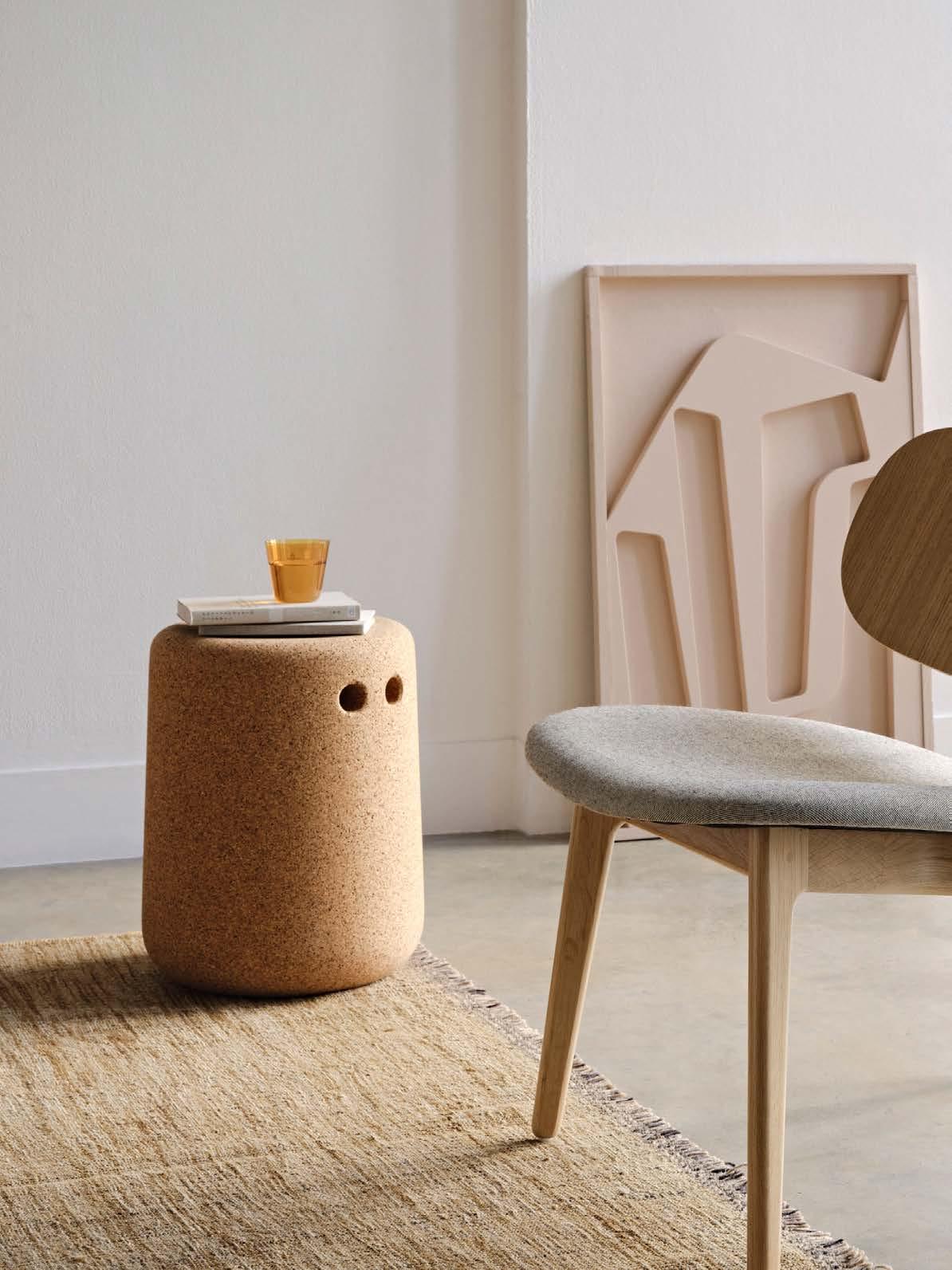
In 2024 WE RECYCLED 57% of our waste with a landfill DIVERSION RATE OF 99% .

Operational waste will always be a challenge for manufacturers. Even with the best nesting techniques, and a lot of donations to local groups, there will always be some wood and fabric waste. We are looking at ways to best manage this waste or use it as a resource.
104.18 T
TOTAL
45.08 T
NON-RECYCLED
59.10 T
RECYCLED
INCINERATED
Our goals for the years ahead will be to minimise waste creation and find creative ways to increase the amount of waste we recycle.



A clumsy cup of coffee or a careless smudge of ink shouldn't mean a whole chair gets binned, by choosing chairs with replacement covers you can stretch out the lifetime of a chair way beyond its fabric cover.
We now have 11 seating ranges available with removable covers: Milo, Lily Compact, Balance, Balance Lite, Balance Lounge, Maluma, Quiet, Hold, Everyday, Clara and Belt.

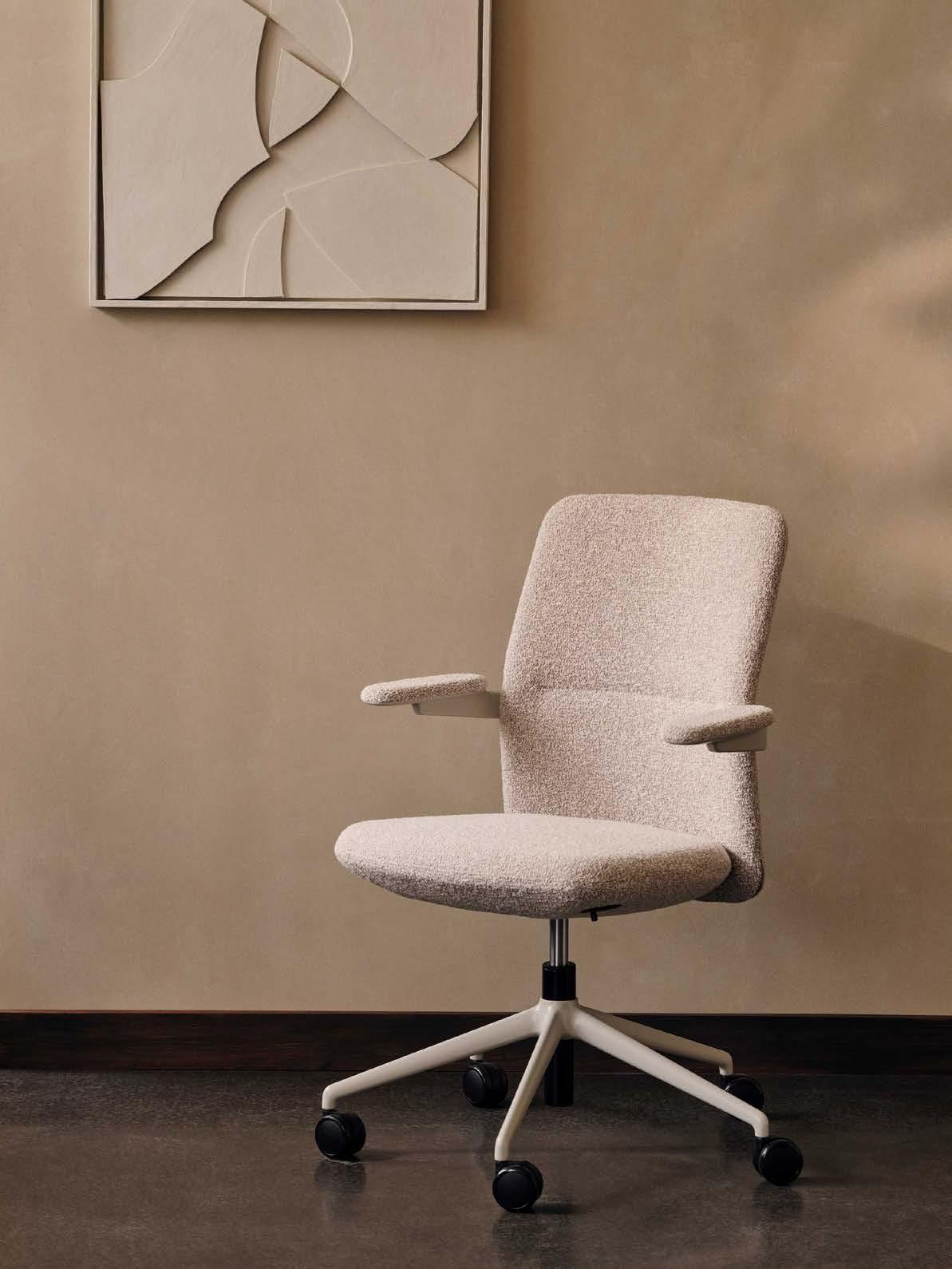

Every year, an estimated 8 MILLION PLASTIC enters our oceans to RECYCLE our way out of
MILLION tonnes of oceans - we are not going

100 RECYCLED
in every shell.
Taking discarded PET plastic drinks bottles as a raw material, bottles are crushed, flaked, melted into pellets and stretched into long fibres and carded like wool. The fibres are layered and then compressed to form sheets of PET felt before being pressed in a mould and set with heat to form a permanent shape.

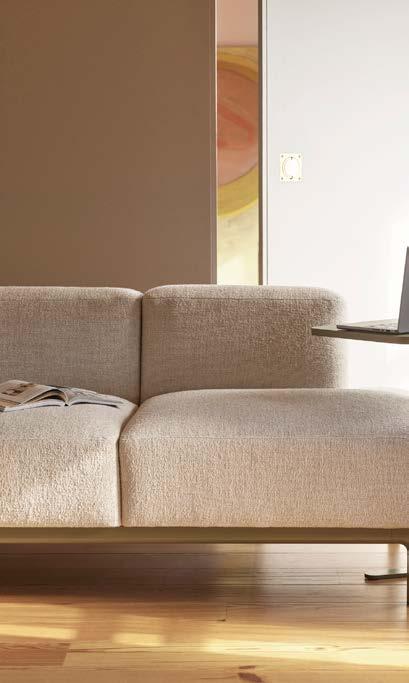
In relative terms, plastic has been around for a very short time, yet in just over a hundred years we have produced more than 10 billion tonnes, with 6 billion tonnes of plastic sitting in landfill. Only 9% of plastic has ever been recycled and most of this has been downcycling.
Part of our strategy is to keep plastic use as low as possible, this means in our products and in our packaging. We have been using coconut fibre in place of foam since the launch of Edge Free in 2023 and our Richard chair uses 100% recycled PET. We are looking at our current collection to identify further contenders for foam free fillings and exploring foams with reduced fossil fuel inputs.

Our foam free seating system, made using natural fibres. Coconut fibre, a waste product from the food industry and a 100% wool felt replace polyurethane foam and polyester fibre, giving Edge Free a better end of life solution, reducing its embodied carbon and helping us reduce reliance on the petro-chemical industry.


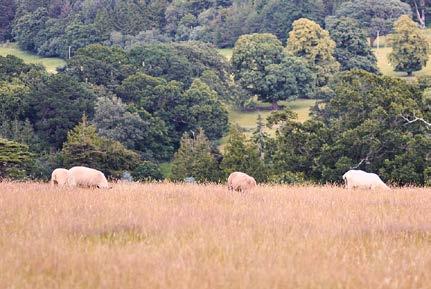
In 2023-2024 98% (8% up from 2022-2023) of our packaging was COMPOSTABLE or RECYCLED and we have been making good progress since…

We still have a long way to go to phase plastic out of our packaging but we are making progress bit by bit. We have swapped to recycled plastic for edge and corner protection and we continue to trial non plastic alternatives.
65.23 T
1.89 T
33.67 T

our staff, to everyone in PEOPLE POSITIVE
82% of our
significant suppliers
*
are WITHIN
THE UK . The average length of time that we have been doing business with our suppliers is OVER 5 YEARS .
Globalisation has made our world seem smaller and more connected but a more distant supply chain risks the lives and liberty of the people further up the supply chain who are out of sight and out of mind. A staggering 50 million individuals are estimated to be trapped in modern slavery worldwide** and it is our responsibility to examine and re-examine our supply chain to make sure that no part of it is contributing to human rights abuses.
Almost two-thirds of all forced labour cases are linked to global supply chains, with workers exploited across a wide range of sectors and across every stage of the chain but most forced labour occurs in the lowest tiers of supply chains - in the extraction and production of raw materials. In the world of furniture manufacturing, particularly high risk commodities include imported textiles, electronics and timber with higher risk export countries being China, Malaysia, Russia, Brazil and Peru.
Somerset, UK Modus Head Office
United
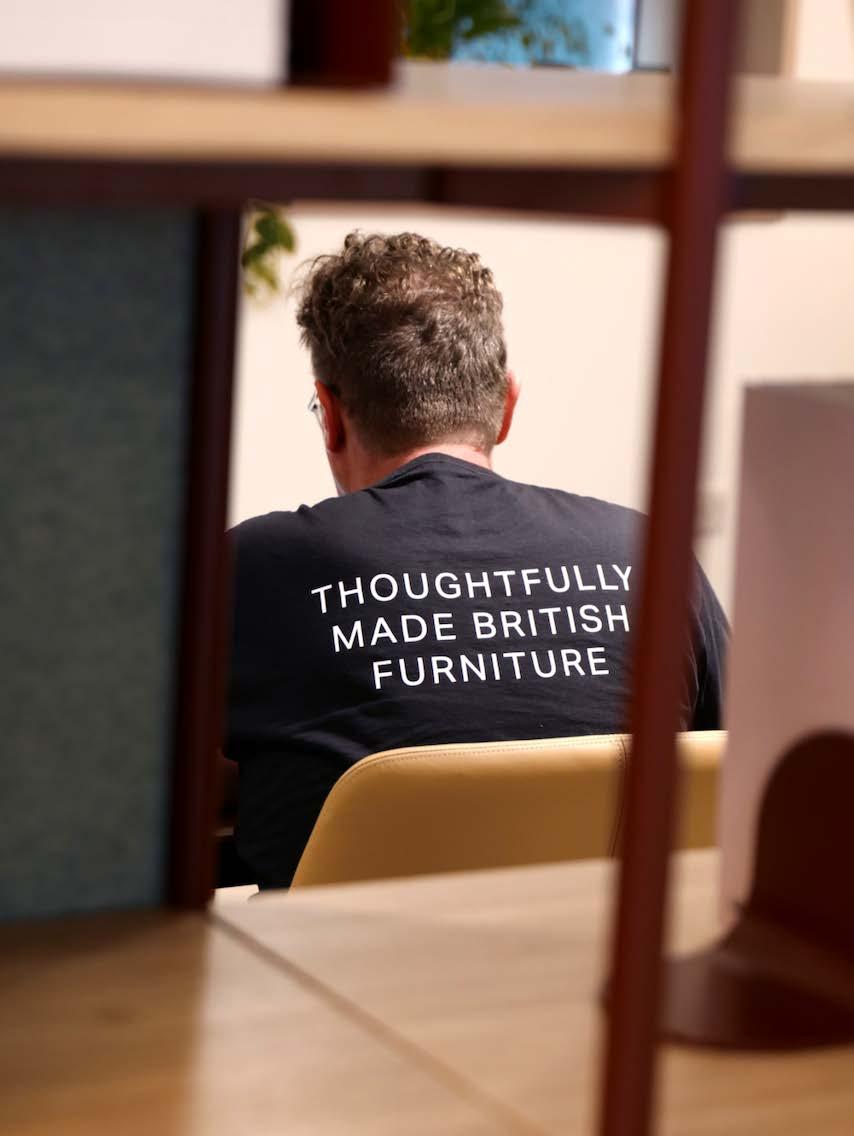

We want every one of our team to feel proud of their contribution and proud of us as a business. We have an open, transparent way of communicating that encourages staff feedback so we can keep improving.
We offer all our staff private healthcare insurance, with 24 hour access to mental health support.
We have the most fabulous location set amongst rolling hills, and our Thursday run club helps encourage our team to stay fit. For those that like to take things a bit slower, lunchtime walks still get the heart pumping on those inclines.
We host regular social events throughout the year to bring our people together and foster team spirit, from pancake breakfasts to pizza lunches, summer celebrations and Christmas parties, and we always celebrate employee achievements and work anniversaries.
Every quarter, we hold an employee forum where staff can ask questions and offer suggestions to make sure we are doing the best for our team and every voice is heard.
Staff development is focused on regular appraisals that offer the chance to talk through challenges and aspirations so that we get the best from our staff, and they get the best from us.
Diversity brings fresh perspectives and helps prevent us continuing to do more of the same. Diversity results in better decision making, greater creativity and innovation, improves adaptability, resilience and ultimately leads to a more just and equitable society.
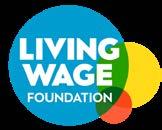

We know we need to work harder to improve the diversity of our team and that’s why we are working on our recruitment process. When it comes to diversity in design – we know we need more diversity in the designers we work with, our plan is to reach out to more female designers and designers from under-represented minorities to try to create a better balance.
TOTAL WORKFORCE BY GENDER
MANAGERS BY GENDER
BY
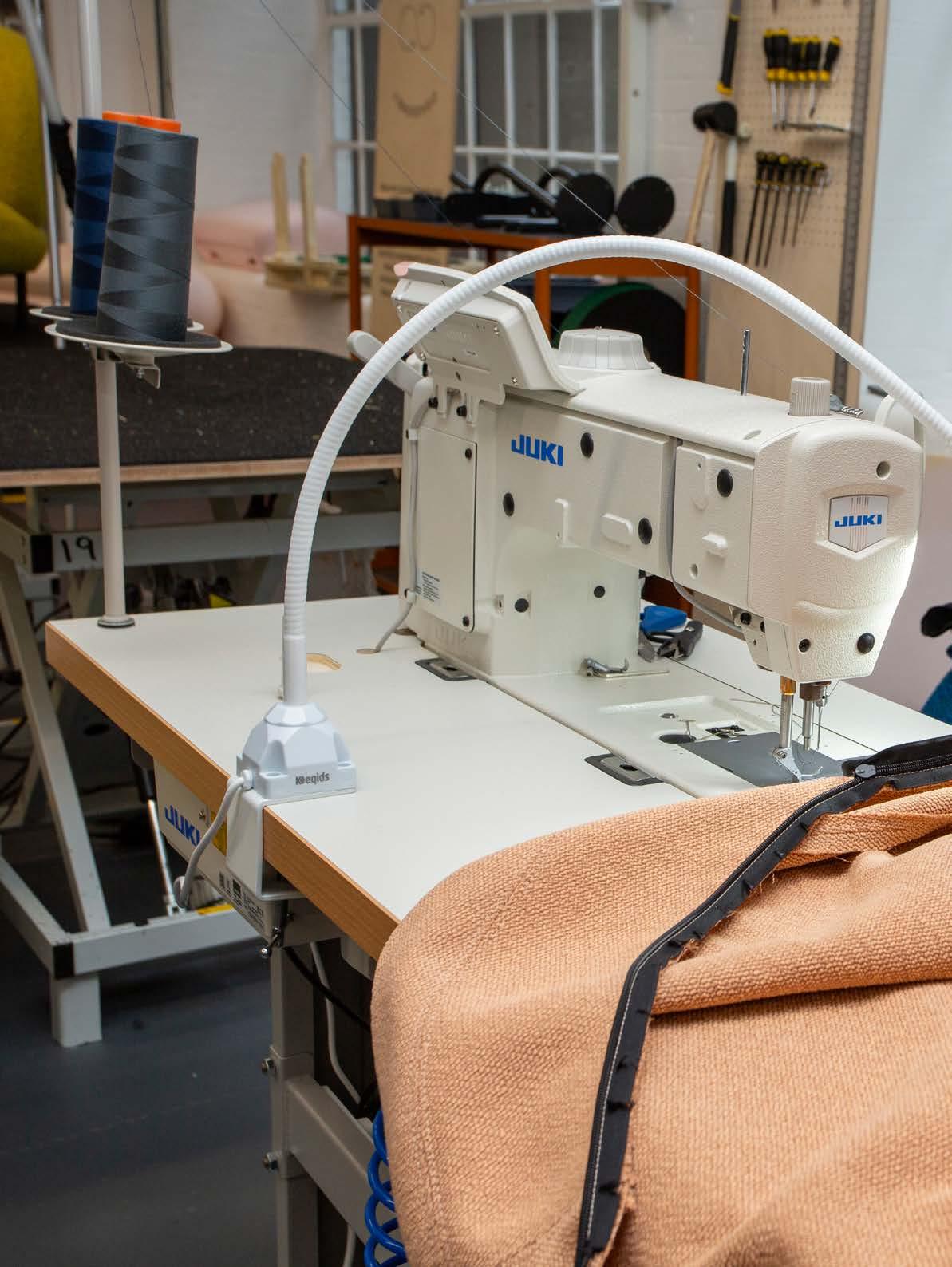
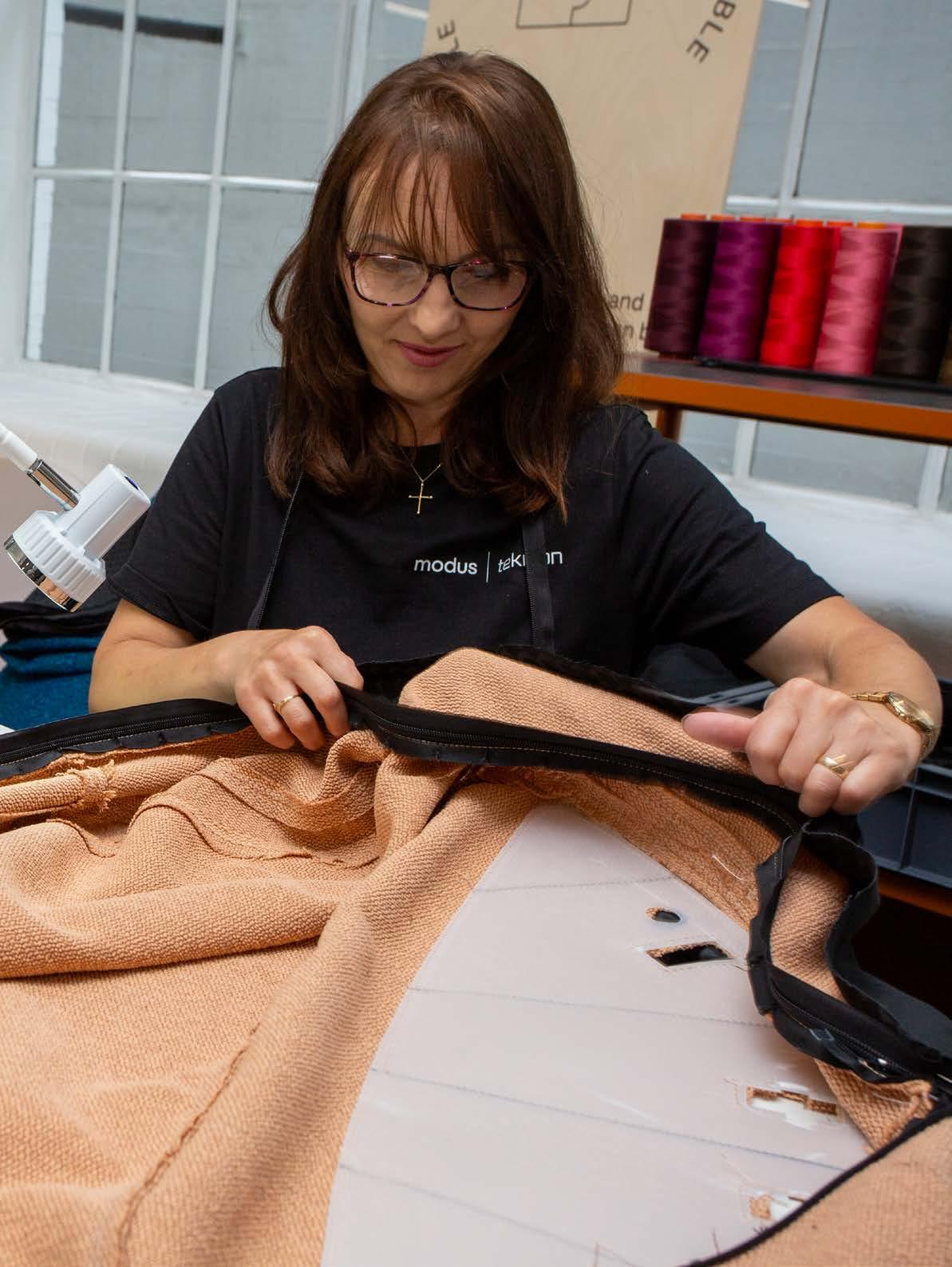

We have a particular focus on SUPPORTING THE YOUNG PEOPLE in our LOCAL COMMUNITY .
We are proud to work with educational settings that offer creative alternatives to traditional teaching. We donate materials to enable the teaching of practical, hands-on skills, building self esteem in disaffected young people for whom the traditional system is not a good fit.
We also donate wood and fabric offcuts to three local secondary schools to help stretch budgets, providing quality materials to design and technology and art departments and encouraging a love of design.
Our local community group, Crewkerne Shed, has used our offcuts to make hedgehog houses to support our local RSPCA centre's hedgehog rehabilitation programme and swift boxes to provide essential shelter for these incredible birds that spend up to 10 months of the year airborne, only to return to their nesting sites to find them destroyed, retrofitted and 'improved'. Crewkerne Shed is a great community group that supports a huge breadth of local groups and causes.
Textile offcuts are donated to a community textiles recycling hub in London, just 4 miles from our London showroom. Yodomo work with over 2000 creatives and craftspeople from the local area, finding good homes for the textile waste created in the manufacture of our upholstery.
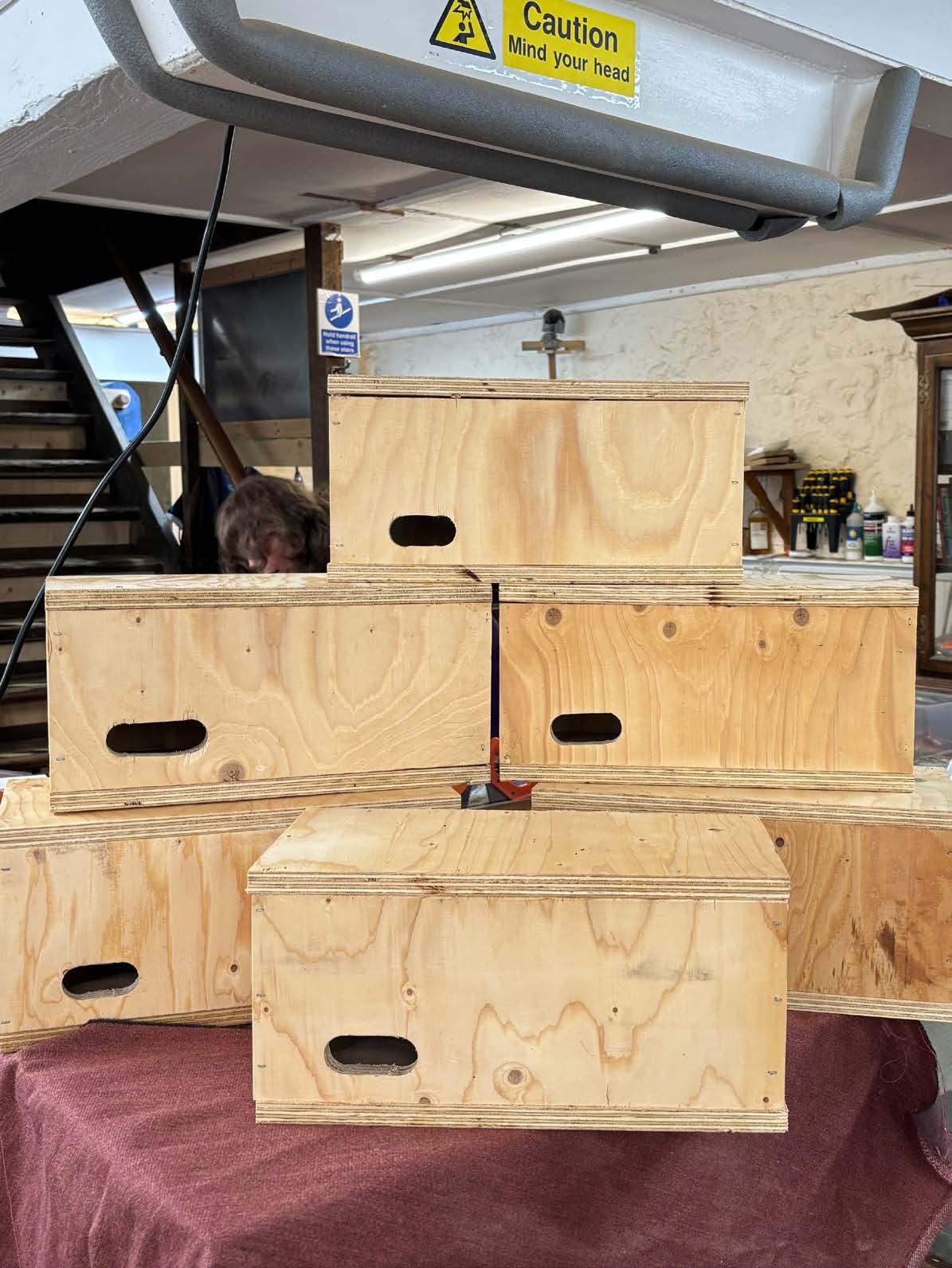
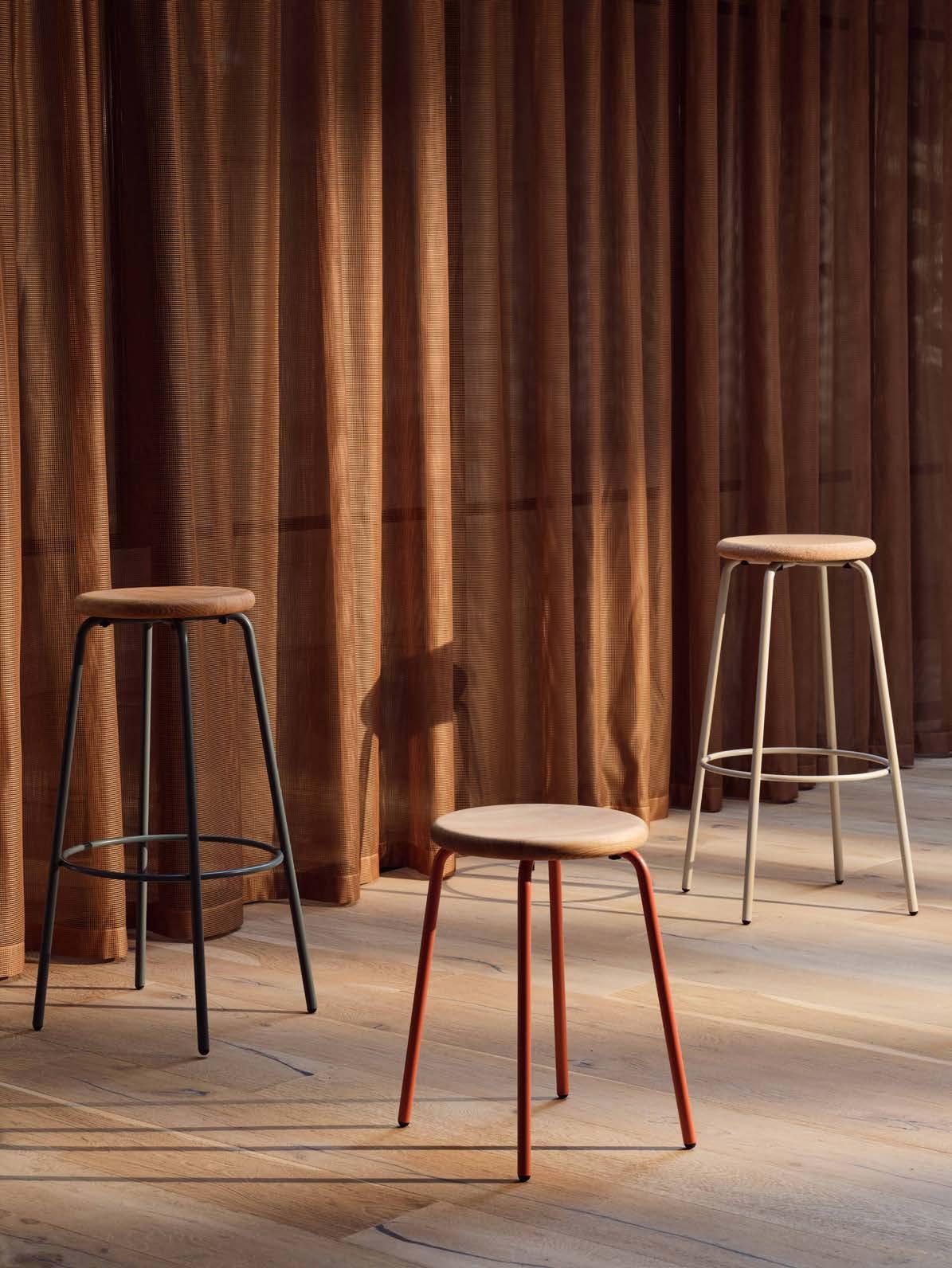
120 MILLION DISPLACED PEOPLE worldwide, that is 1 IN 63 of us ....and rising

The United Nations High Commissioner for Refugees reported 120 million displaced people worldwide, an increase of 6 million compared to the previous year. At the time of writing this figure will be far higher due to the tragic events unfolding in Gaza, and the continued displacement of people in Ukraine, Sudan, Syria, Myanmar, Afghanistan, Venezuela, Democratic Republic of the Congo and the Sahel region of Africa. By 2050 it is estimated that as many as 1.2 billion people may have been forced from their homes due to climate migration.
We partner with Movement On The Ground, a charity working to improve the lives of refugees. Our donations have contributed to the bare basics we all need to survive, to hot meals, and community shelters where individuals and families can come together to share a meal. As the refugee crisis continues to unfold, we are proud to be supporting the great work of this forward thinking charity.
5% of the profits of our Bob and Michael Stools are DONATED to Movement On The Ground.


These are the FRAMEWORKS to guide us into DECISION meets the needs of society within of our PLANET.
FRAMEWORKS that we use
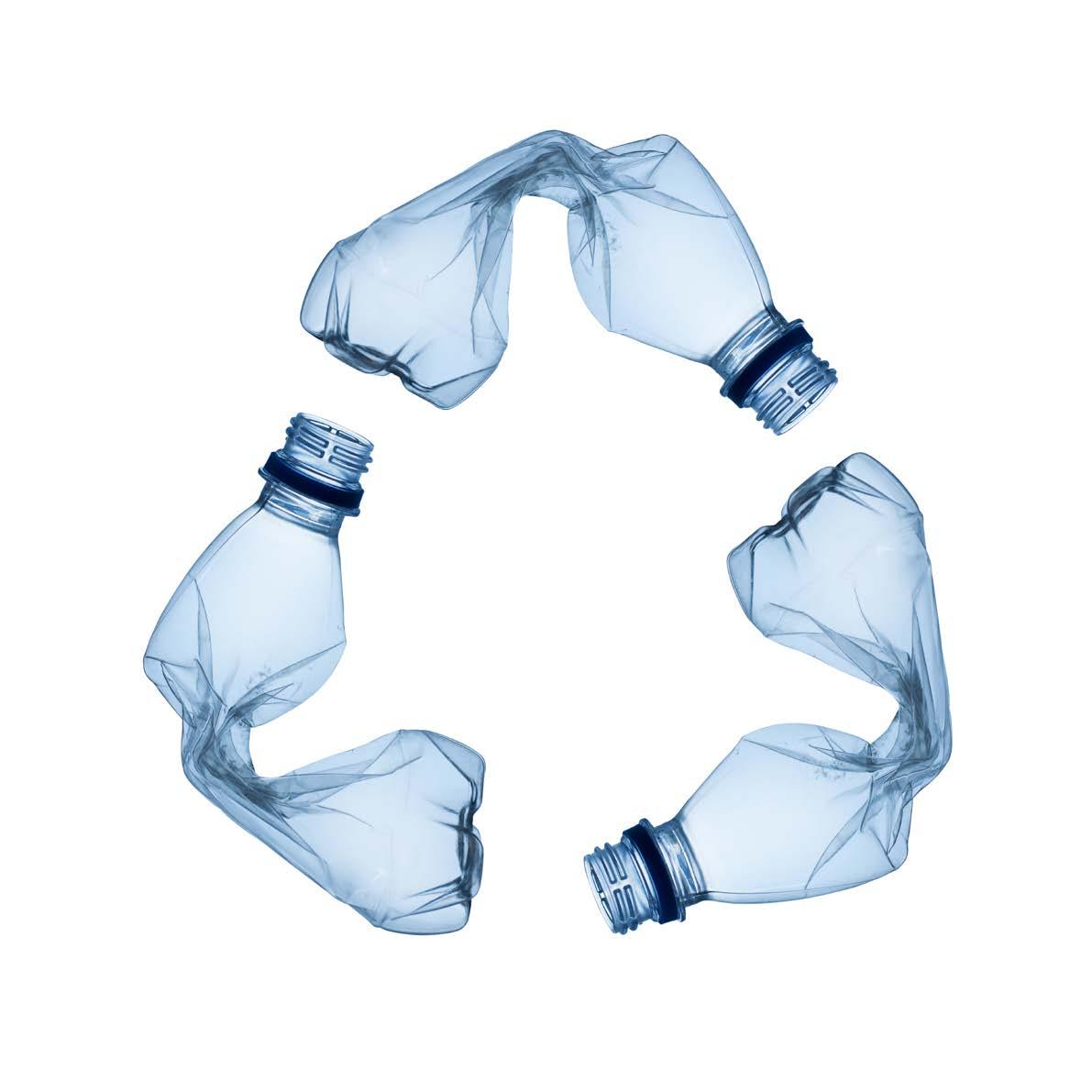
When you hear the words ‘circular economy’ what probably springs to mind is waste materials being used as a resource to make new products. A chair made from recycled plastic for instance. You might even think about a product being used and re-used multiple times, but you are probably less likely to think about the avoidance of pollutants, harvesting within ecosystem limits and regenerating natural systems. Yet these are key elements of a circular economy. The three pillars that support a circular economy ask that we work to:
Our approach to designing out waste and pollution is to minimise resource use and the production of waste, opt for low carbon, often bio-based materials, avoid harmful chemicals and all substances damaging to the environment from single use plastics to VOCs. Our design briefs always call for an eco design approach.
To keep our products in use over multiple life cycles we offer spares and replacement parts and we are especially good at replacement covers. When you no longer want your product get in touch with us and we will take it back and refurbish or remanufacture it ready for its next life.
BEING A B CORP means we are part of a global movement using business as a force for good - WE ARE PROUD TO BE GOING BEYOND ‘business as usual’.
With a purpose greater than simply making a profit, every B Corporation must align its business activities with positive actions for a better world. The B Corp certification is awarded to businesses that meet high standards of social and environmental performance, accountability and transparency and have been independently verified to go beyond business as usual.
The ‘B’ in B Corp stands for ‘benefit for all’. B Corps, have been verified by the B Lab (an independent, not for profit organisation) to benefit all stakeholders. Every B Corp has made a commitment to prioritise not just its shareholders, but everyone with a stake in its performance. Workers, customers, suppliers, local communities, wider society and the environment are all on an equal footing with profit. This means business decisions need to factor in impacts on people, planet and profit and always question whether these decisions align with the fourth ‘P’ - purpose.
B Corps are driven by the desire to create an inclusive, equitable, and regenerative economy that benefits all.
This purpose informs every aspect of our business, from day-to-day operations to the highest strategic governance.
Like every B Corp journey, our first steps began with the B Impact Assessment, (BIA), an in depth assessment by the B Lab, individually tailored to our sector. The BIA is a comprehensive, credible and comparable impact assessment covering five main areas - Governance, Environment, Community, Workers and Customers. Here we set out our scores for each impact area, what we said we would do to improve, our progress in 2023-2024, and our goals for the year ahead.
Governance – 17.2
The Governance impact area looks at the way we do business, our mission, ethics, accountability and transparency by scrutinising topics such as impact reporting, stakeholder engagement and social and environmental decision making.
What we said we’d do
Review and improve our Stakeholder Engagement Plan. Publish annual Impact Report to include B Corp scores.
What we did
Identified opportunities for closer collaboration with schools and community groups and offered factory visit to the Deaf Academy.
Published 2023-2024 Impact Report with B Corp scores and goals for 2024-2025.
Our Goals for 2024-2025
More regular communication with local educational and community groups to invite feedback on their needs. Align reporting with upcoming B Corp standard.Host a B Corp event to strengthen the network of B Corps in our sector.
Workers – 24.4
Our workers are the cornerstone of our company and we pride ourselves on offering employment that is engaging and positive. We are proud to be an accredited Living Wage Employer. The Workers impact area evaluates our contribution to our staff’s financial, physical, professional and social well-being.
What we said we’d do
Make best use of site and premises to improve workplace experience. Train 1 new mental health responder.
What we did
Improved outdoor dining area with homegrown veg for staff use. Appointed HR Manager with mental health responder training.
Our Goals for 2024-2025
Increase green space for staff use. Implement a social and wellness calendar of events.
Community – 14.0
The Community impact area evaluates our impacts on our local and wider communities, evaluating our approach to diversity and inclusion, local supply chains and charitable engagement.
What we said we’d do
Review hiring and promotion practice for equity & inclusivity. Offer an internship in our Product Development department. Offer an apprenticeship placement.
What we did
Appointed individual responsible for DEI. Provided an internship for Bath Spa Product & Furniture Design student. Provided an apprenticeship in joinery production. Worked with community groups, to create wildlife nest boxes using factory offcuts.
Our Goals for 2024-2025
Review DEI strategy. Continue to offer internship in Product Development department.
Environment – 31.2
Under this impact area, the B Lab has considered our environmental stewardship, including how we identify and manage our environmental impacts. This covers our carbon emissions, energy use, water use, sustainable sourcing, resource conservation, impacts on biodiversity and product certification.
What we said we’d do
Map GHG emission hotspots in our supply chain (scope 3). Develop products designed for the circular economy. 100% of wood-based products to carry FSC certification.
What we did
We are still working with our supply chain on scope 3 emissions data. Launched Maluma, a seating system designed for disassembly. Re-developed belt stool so every product containing wood can be FSC certified.
Our Goals for 2024-2025
Set Science Based Targets in 2025. Swap 1 diesel powered vehicle for an electric vehicle. Add 1 more x circular products to the collection Publish LCAs for our product collection. Phase out any non FSC wooden packaging.
Customers – 3.0
This impact area evaluates our conduct towards both direct customers and end users, covering topics including ethical and positive marketing, warranties and quality assurance, data privacy and data security. We are committed to excellent customer stewardship and nurturing positive, long-term relationships with our customers.
What we said we’d do
Improve opportunities for customer feedback.
What we did
Established regular factory visits withopportunities to feedback on product, service and sustainability actions.
Our Goals for 2024-2025
Continue to offer factory visits and more sustainability related client engagement.
In 2024 the B Lab updated the B Corp standards to be even more rigorous with impact topics being recategorized to cover Purpose & Stakeholder Governance, Fair Work, Human Rights, Justice, Equity, Diversity & Inclusion, Environmental Stewardship & Circularity and Government Affairs & Collective Action. When we re-certify we will be assessed under the new B Corp standards.
EQUITY are inseparably linked. Understanding this is an essential element to any SUSTAINABILITY STRATEGY .
A great framework that helps steer our sustainability strategy, Doughnut economics visualises the interplay between planetary limits and the needs of society as a ring doughnut shaped model, where excessive planetary pressures spill out over the outer circle of planetary boundaries — overshoot. These pressures include climate change, ocean acidification, biodiversity loss, land conversion, chemical pollution, ozone depletion, air pollution, freshwater withdrawal and phosphorous and nitrogen loading. These impacts disproportionately affect the young and those impacted by poverty and social disadvantage.
The hole in the doughnut represents the inner circle of social foundations, a shortfall if you like, of the minimum social standards as identified by the world’s governments in the Sustainable Development Goals in 2015: education, health, gender equality, income, social equity, political voice, peace and justice and access to networks, energy, housing, freshwater and food. The basics we all need to thrive. The space between ecological overshoot and social shortfall, the dough of the doughnut, is the safe operating space and the place we need to be.
These are the UN SDGs most relevant to our business activities alongside simple explanations from the UN as to WHAT WE CAN ALL DO to achieve these goals and the KEY STEPS WE HAVE TAKEN to align with these goals.
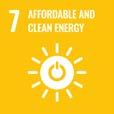
“Protect eco-systems and commit to sourcing 100% of operational electricity needs from renewable sources.”
We use 100% renewably powered electricity 39% of which is self-generated.
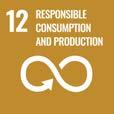
“Find new solutions that enable sustainable consumption and production patterns. A better understanding of environmental and social impacts of products and services is needed, both of product life cycles and how these are affected by use within lifestyles.”
We now have 11 seating ranges with covers that can be replaced and 4 product ranges that have been designed for disassembly.
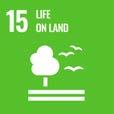
“Forests cover nearly 31 per cent of the world and are home to more than 80 per cent of all terrestrial species of animals, plants and insects. However, biodiversity is declining faster than at any other time in human history. Goal 15 is about conserving life on land. It is to protect and restore terrestrial ecosystems, sustainably manage forests, combat desertification, and halt and reverse land degradation and stop biodiversity loss.”
We hold FSC chain of custody certification and can certify 100% of our collection made from wood or containing wooden components.

“Ensure emissions are lowered, not just because it is the right thing to do, but because it makes economic and business sense as well.”
We have reduced scope 1 & 2 emissions by 49% compared to our baseline year – we are mapping and starting to measure scope 3.

“Providing youth the best opportunity to transition to a decent job calls for investing in education and training of the highest possible quality, providing youth with skills that match labour market demands, giving them access to social protection and basic services regardless of their contract type, as well as levelling the playing field so that all aspiring youth can attain productive employment regardless of their gender, income level or socio-economic background.”
We offer apprenticeships, internships and have long standing relationships with local schools and alternative settings.
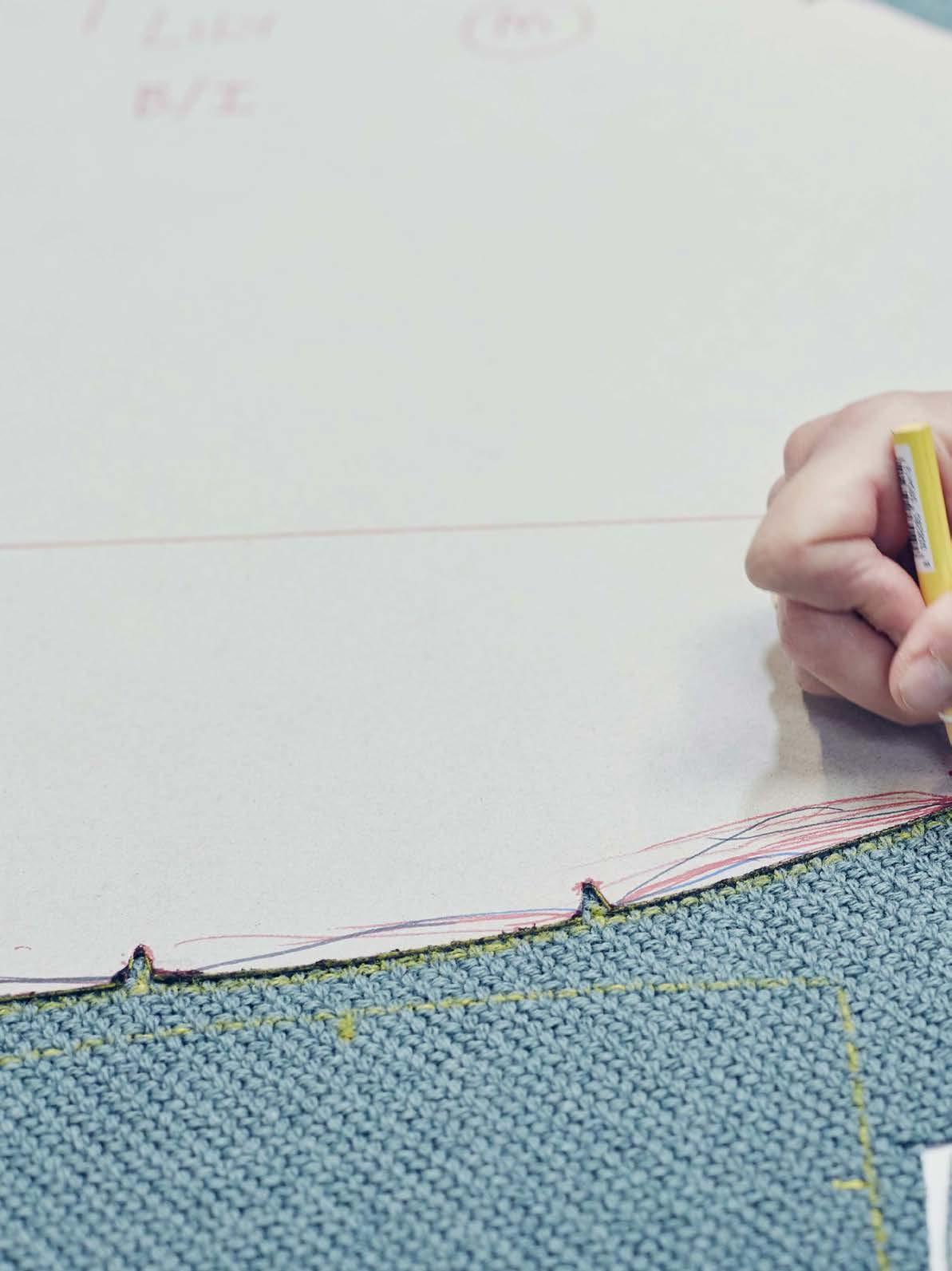
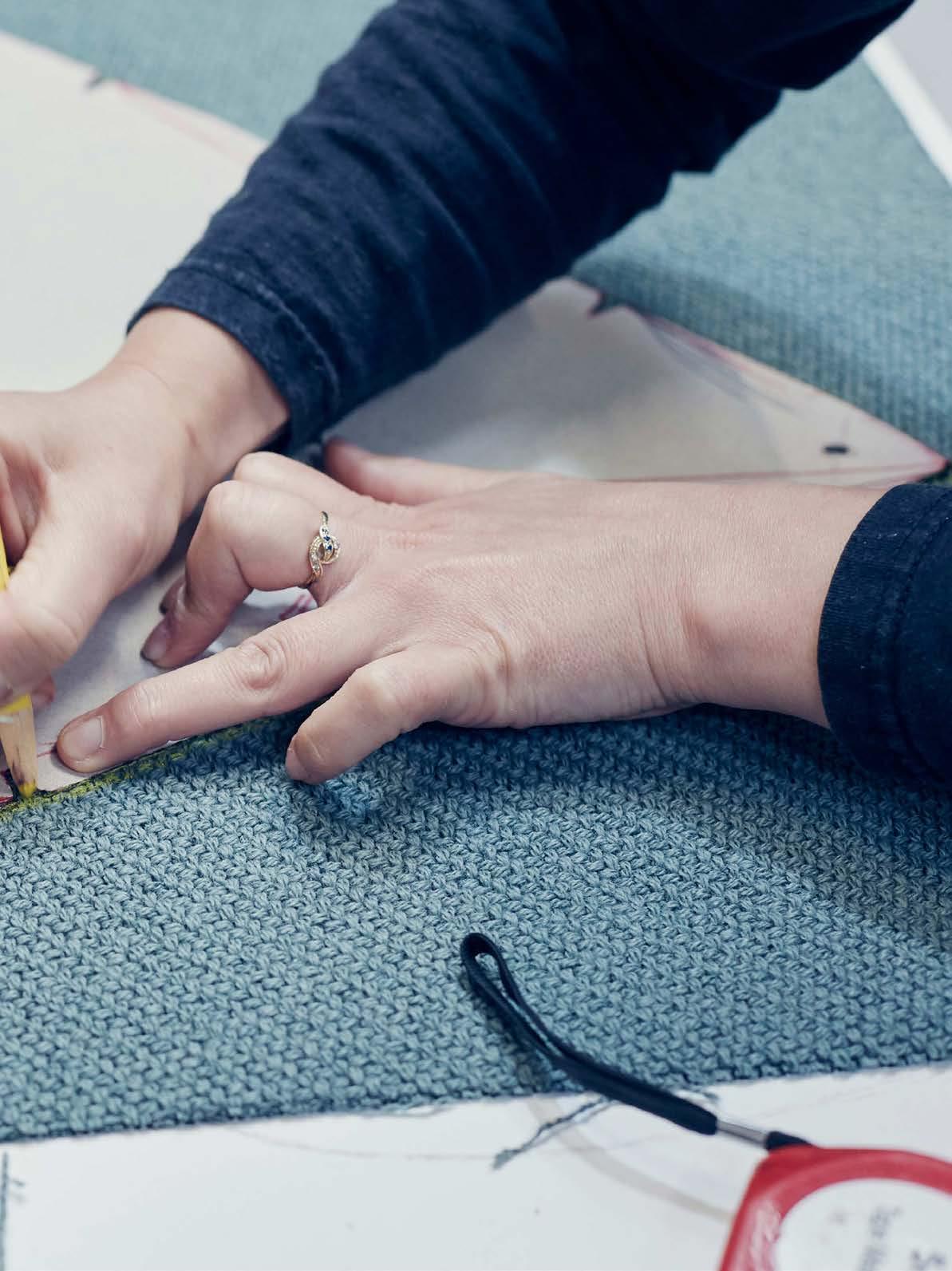
And now for the best bit. We know what our impacts are – here are our targets and the actions we plan to take to reach them.
We all need to work together to create a better future, If you have a bright idea or long term plan and you think we ought to know about it, get in touch with us at sustainability@modusfurniture.co.uk
or contact us at:
HEAD OFFICE & FACTORY
Cricket St Thomas, Chard
Somerset TA20 4BZ
T + 44 (0)1460 258 590
SHOWROOM
28–29 Great Sutton Street
London EC1V 0DS
T + 44 (0)207 490 1358
modusfurniture.co.uk
PHOTOGRAPHY
JAKE CURTIS
STYLING
DESPINA CURTIS
HANNAH BORT
ART DIRECTION & DESIGN A COMMON PURPOSE